The Tateyama Kurobe Alpine Route is renowned for being one of Japan’s most magnificent mountain routes. Open in April each year, visitors get to enjoy the Snow Corridor (Yuki no Otani, 雪の大谷), giant snow walls, that reach up to 6-stories-tall!
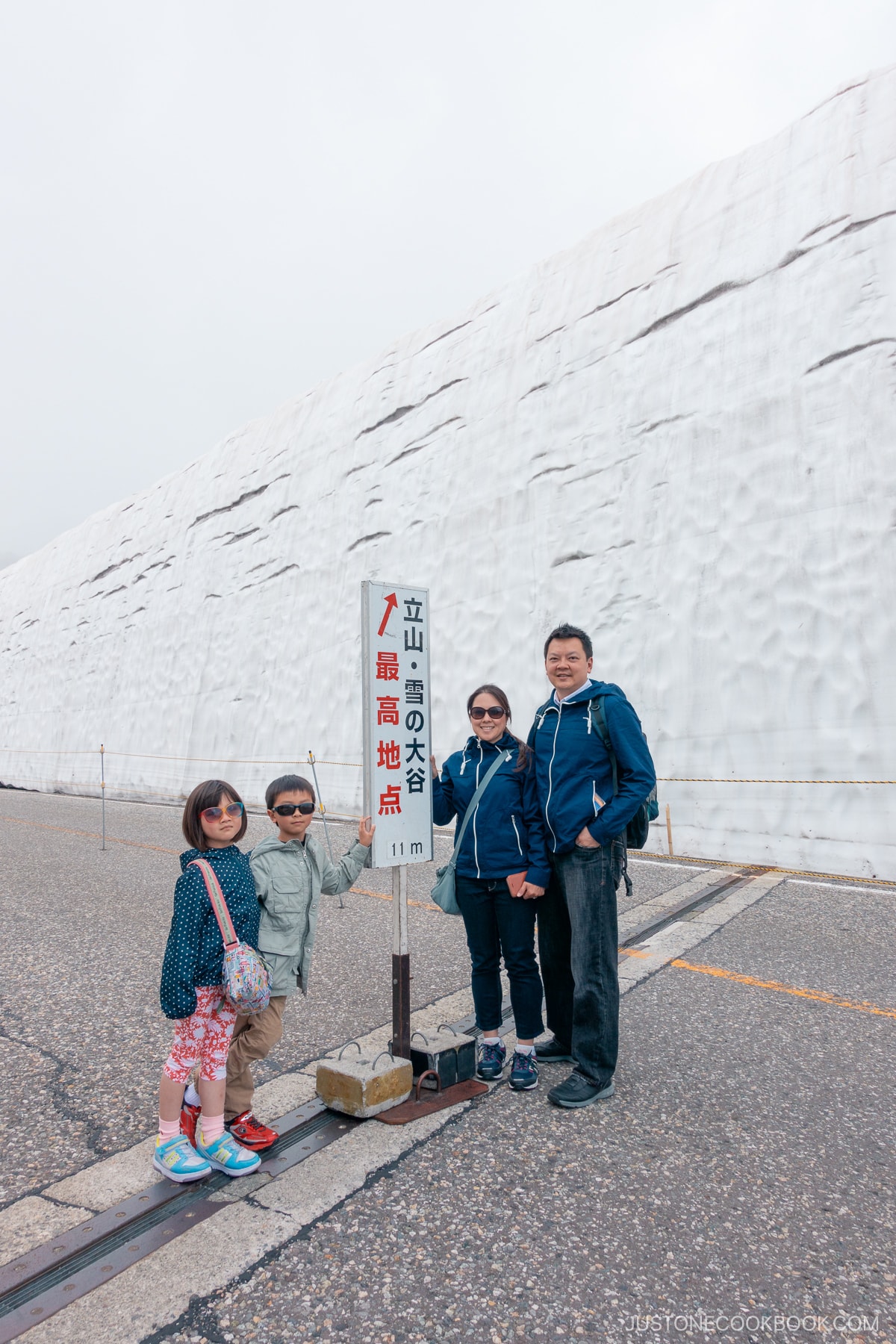
One of the most popular destinations in the Toyama area is the Tateyama Kurobe Alpine Route (立山黒部アルペンルート) in the Northern Japan Alps. To catch up on the first part of our week-long trip, start by reading our Kanazawa post first.
What’s so cool about this route? Well, even though Murodo (室堂) stands at a relatively modest elevation of 2,450 meters (8,038 feet) as the highest point accessible by a vehicle along this path, the region experiences some of the heaviest snowfall in the world! When the route reopens every April, the Snow Corridor, known as Yuki no Otani (雪の大谷), towers impressively at a staggering 20 meters (65 feet) in height. That’s about the size of a 6-story building!
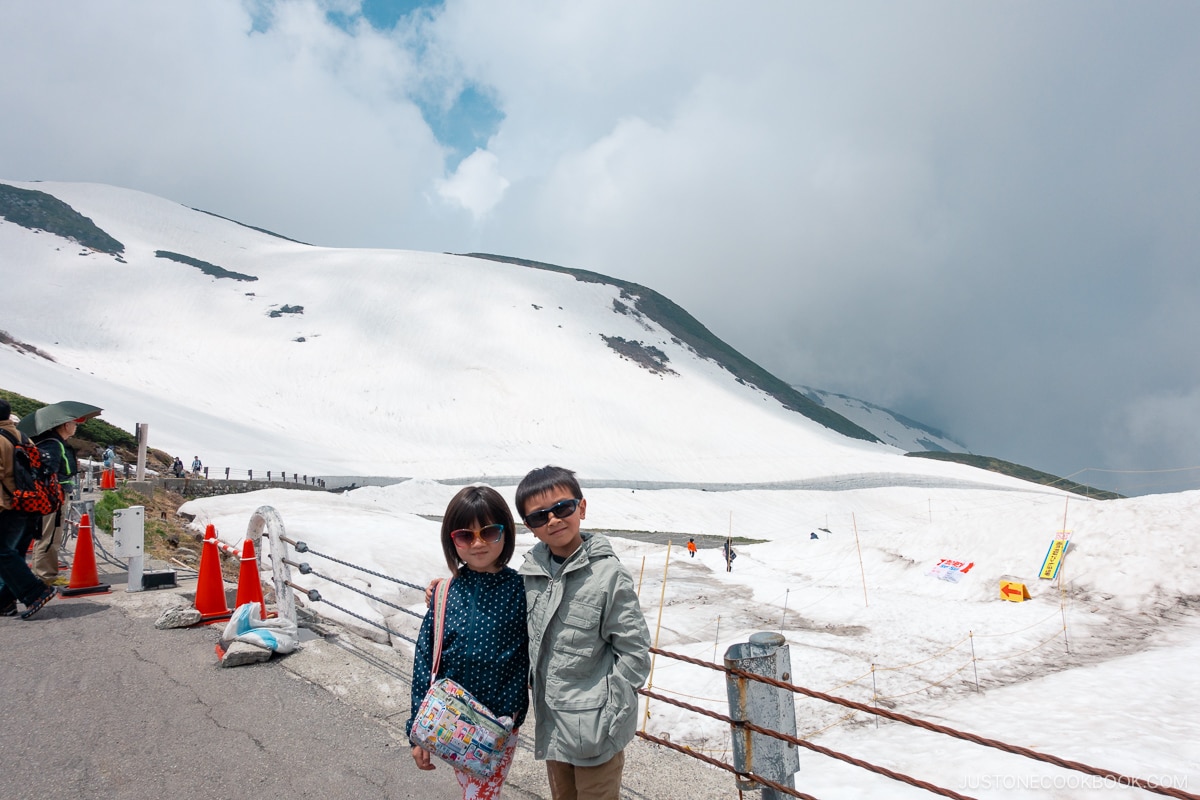
The route welcomes visitors from mid-April to the end of November annually, offering magnificent scenery that’s ideal for both hiking and trekking enthusiasts.
We were lucky that we managed to make it to the 2015 Snow Corridor cutoff date by just one week (it closed on June 22nd). While the Tateyama Kurobe Alpine Route remains accessible after this date, it’s no longer possible for visitors to approach the corridor closely and enjoy the view.
Table of Contents
- Access from Toyama Station to Tateyama Station
- Exploring Tateyama Kurobe Alpine Route: Everything You Need to Know
- Scenic Cable Car Ride between Tateyama and Bejodaira
- Bus Ride from Bijodaira to Murodo
- Tateyama Kurobe Alpine Route at Murodo Station: Snow Corridor and Culinary Delights
- What to do in Toyama: Historic Castles and Memorable Dining
- Izakaya Dai 酒菜工房 だい: Top Recommendation near Toyama Station
Access from Toyama Station to Tateyama Station
We started from JR Toyama station in Toyama Prefecture, which can be a little confusing to navigate due to the various terminals for the Shinkansen, trolley cars, and multiple train lines.
To go to Tateyama, you want to head for Toyama Chihō Railway (富山地方鉄道). The train ticket from Dentetsu-Toyama (電鉄富山) station to Tateyama (立山) station is ¥1,230 one way (in 2023) and it takes about 1 hour. The scenic train journey, with its breathtaking views of Japan’s countryside, filled us with anticipation for the adventure that lay ahead.
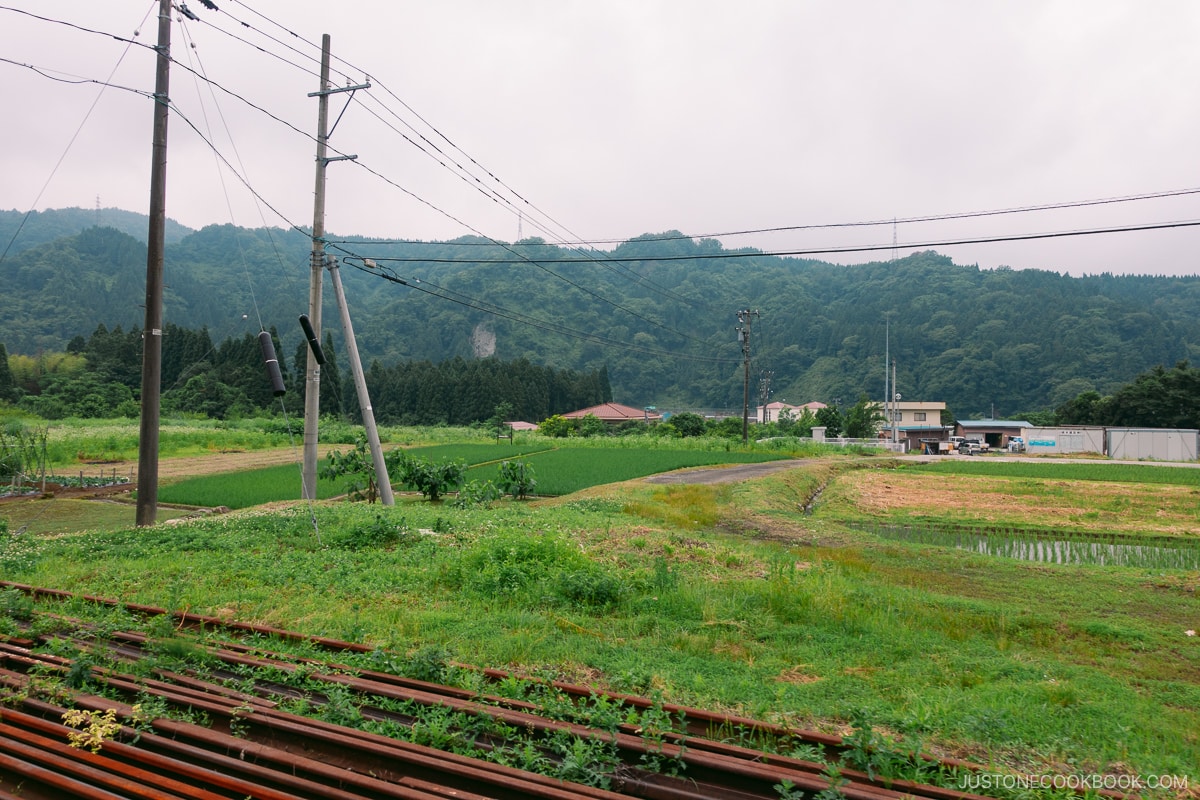
As the train ride progresses, buildings and cities gradually disappear, giving way to towering trees and lush greenery.
Visitors can also access the Alpine route from the opposite end, Kanden Tunnel Electric Bus (Ogisawa Station) in Nagano Prefecture. If that’s your preferred route, take the JR Hokuriku Shinkansen from Tokyo to Nagano Station. Then, board the express bus that goes directly to Ogizawa along the Alpine Route.
Exploring Tateyama Kurobe Alpine Route: Everything You Need to Know
At Tateyama station, you’ll find the typical souvenir gift shop where you can purchase Tateyama Kurobe Alpine Route tickets. Since the route is highly popular, especially between April and June, it’s best to reserve your tickets online beforehand, as we did during our trip.
If you choose to travel the whole alpine route between Tateyama and Ogizawa (扇沢), you will need to take seven different rides, ranging from the Tateyama Cable Car to the Kanden Tunnel Electric Bus and the Tateyama Highland bus. This journey will take approximately 6-7 hours for a one-way trip, concluding at Shinano-Omachi Station. According to the Alpine Route’s FAQ, a round trip between Tateyama and Kurobe Dam (黒部ダム) takes between 8-9 hours, so plan your trip accordingly.
Transporting Your Car Through Tateyama Kurobe Alpine Route
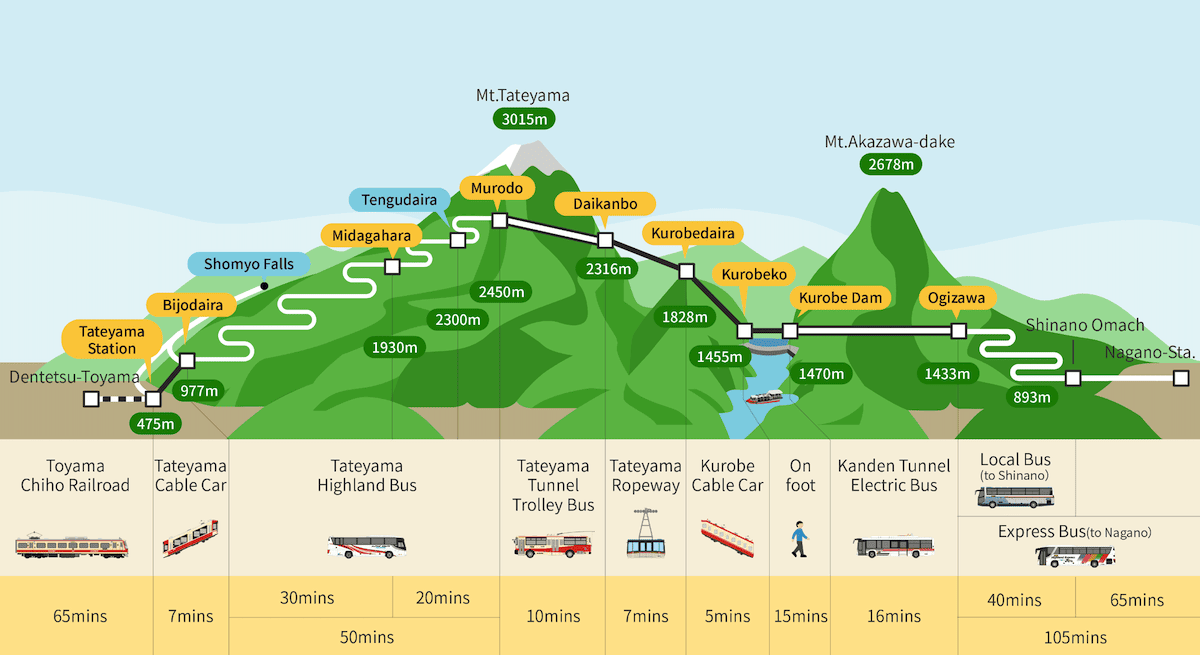
As the route traverses a section of Chubu Sangaku National Park, personal vehicles are not permitted. However, you do have the option to have your car transported from one end to the other, albeit at a rather steep cost of ¥27,000 (around 200 USD in 2023).
Since our week-long journey was set to continue to Takayama (高山) after Tateyama, we decided to forego the journey to Ogizawa and instead enjoy the Snow Corridor at Murodo (室堂).
If you are traveling with ample luggage, you can also have it delivered from Dentetsu Toyama Station or JR Shinano Omachi Station in the opposite direction.
Look what we found at the souvenir shop at Tateyama station—strawberry cheesecake Kit Kat!
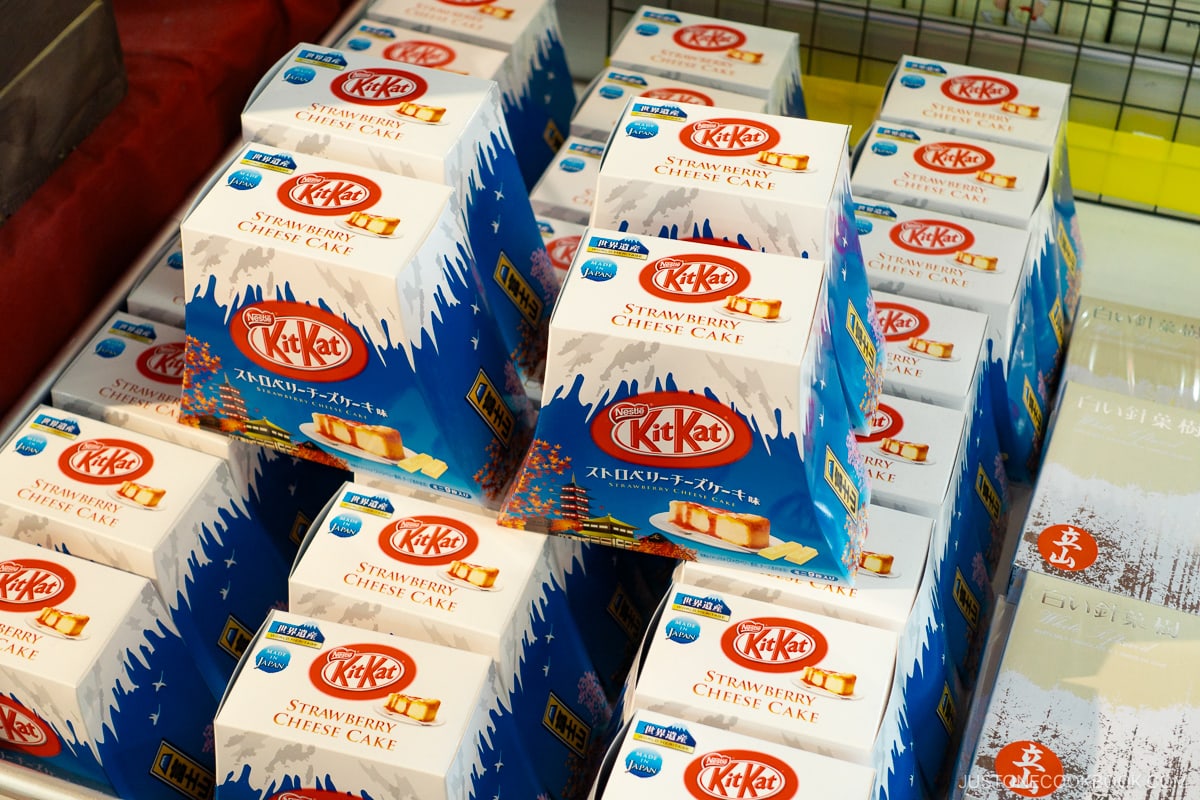
At the cable car station, there is a screen showing 4 different points along the Alpine Route and the current temperature at each location.
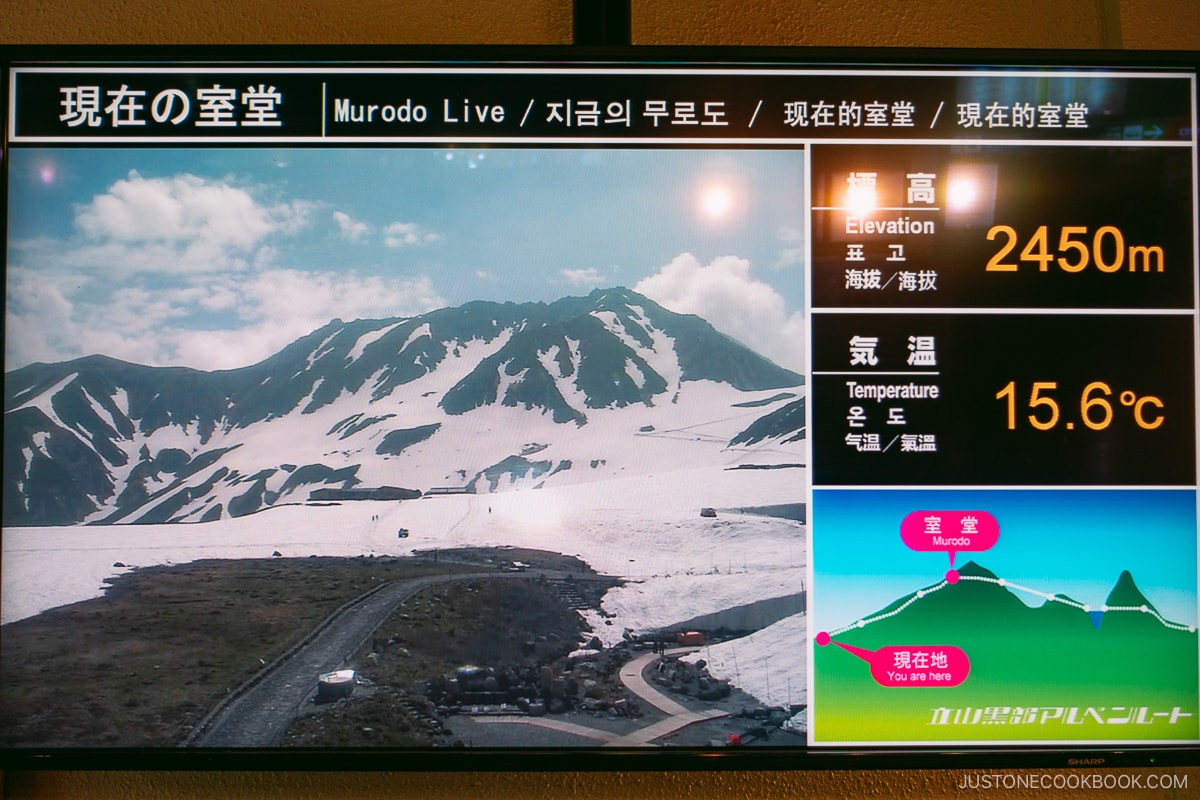
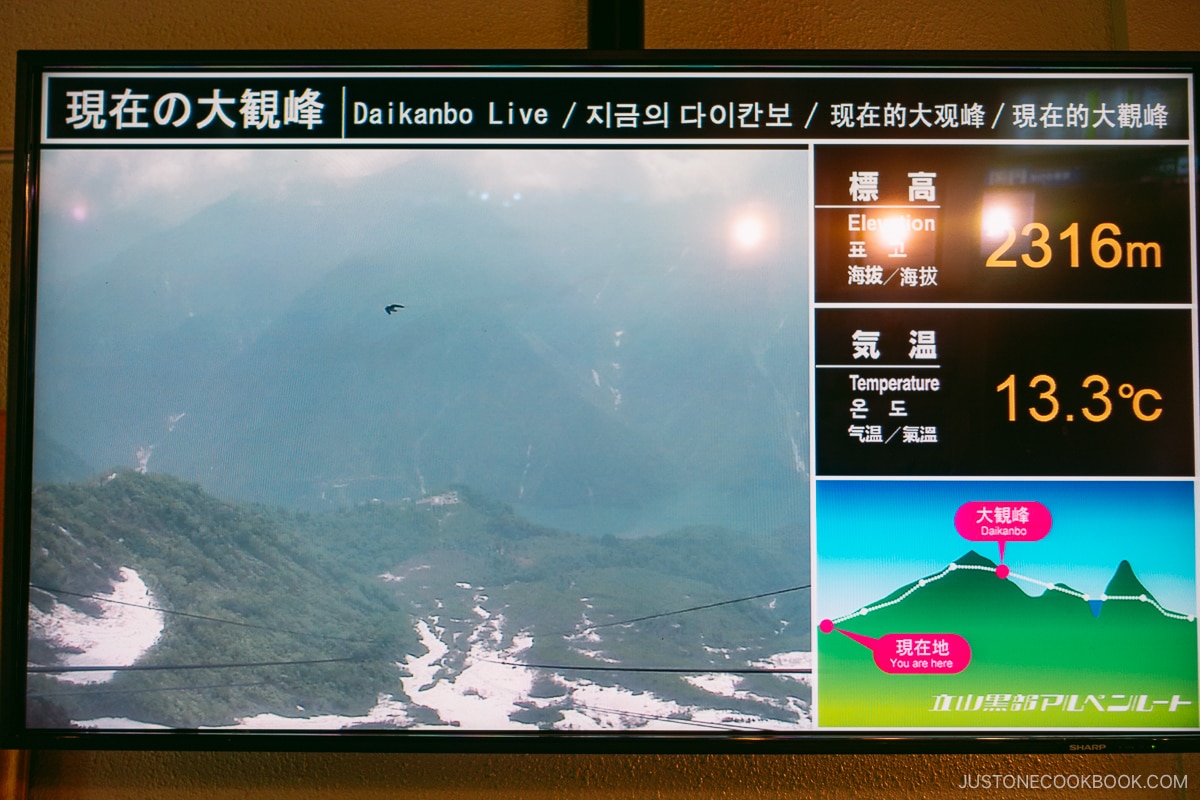
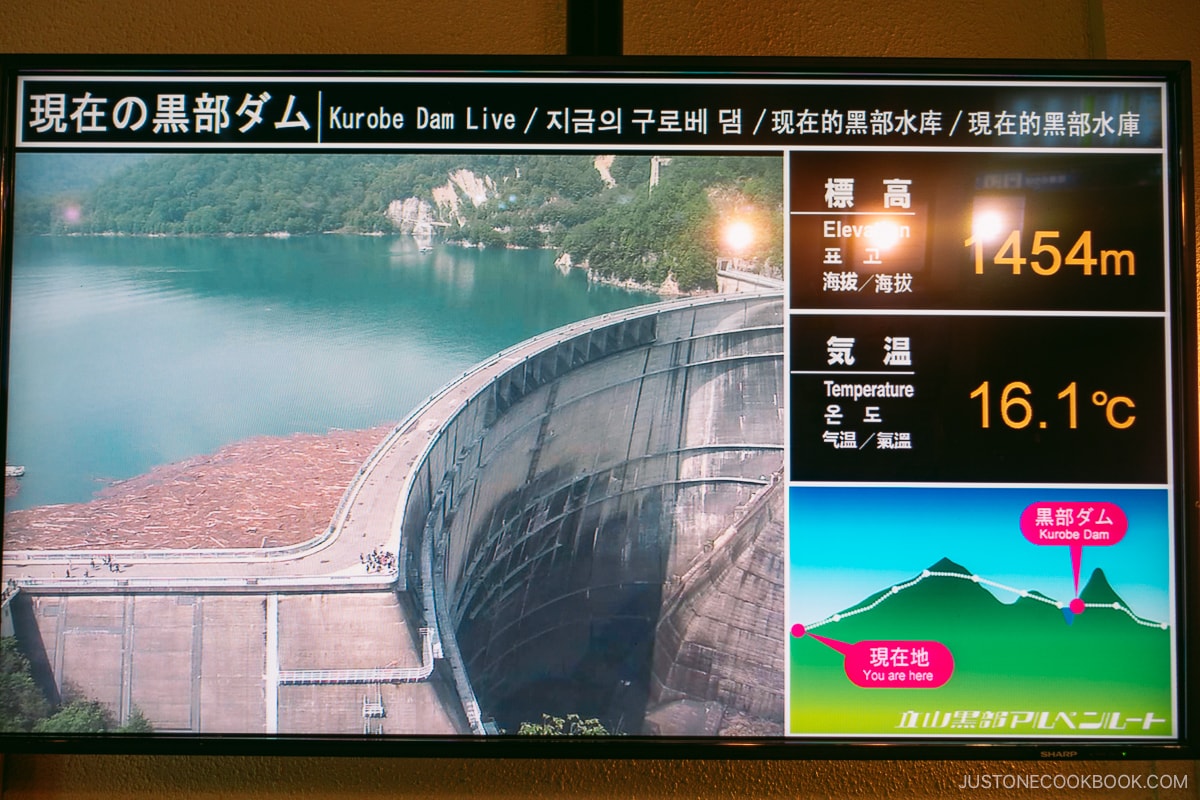
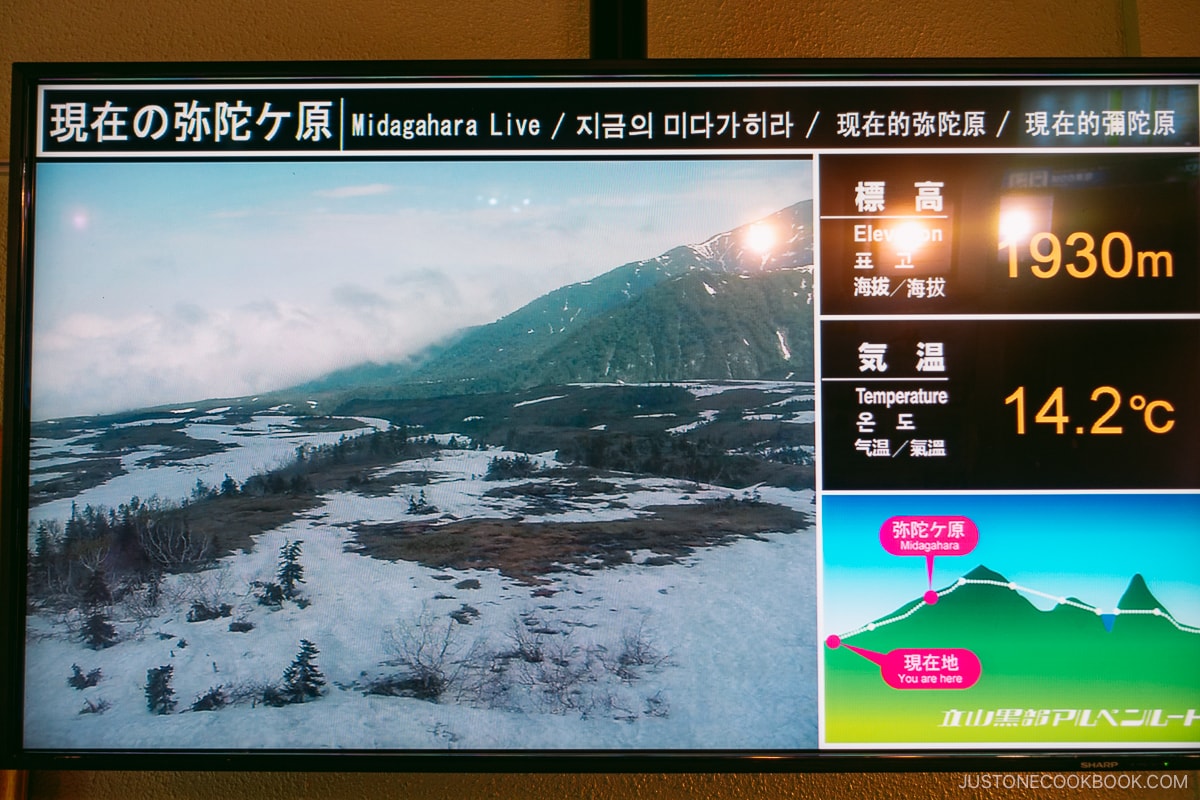
There are roughly around 1 million visitors a year that come to Tateyama Kurobe Alpine Route. To speed up the boarding process, there is one line specifically for individual customers and two lines for tours and large groups.
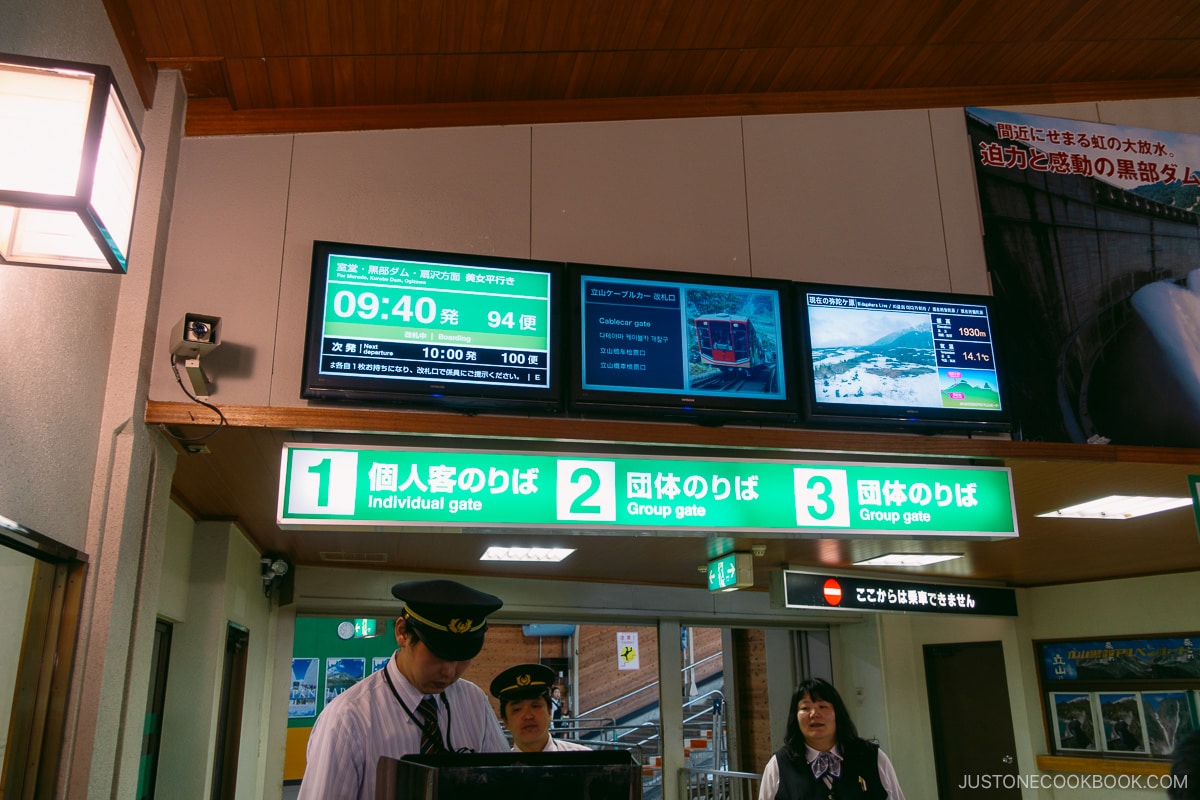
Scenic Cable Car Ride between Tateyama and Bejodaira
The first leg of the journey takes you from Tateyama to Bijodaira (美女平) station, via a 7-minute cable car ride. The cable car ascends a steep slope at a remarkable 24-degree incline, covering an impressive 500 meters of elevation.
What’s particularly intriguing about the cable car is its design—the cars are purposefully constructed at an angle to adapt to the steep incline. Working in tandem, the two cable cars counterbalance each other as they ascend and descend the slope.
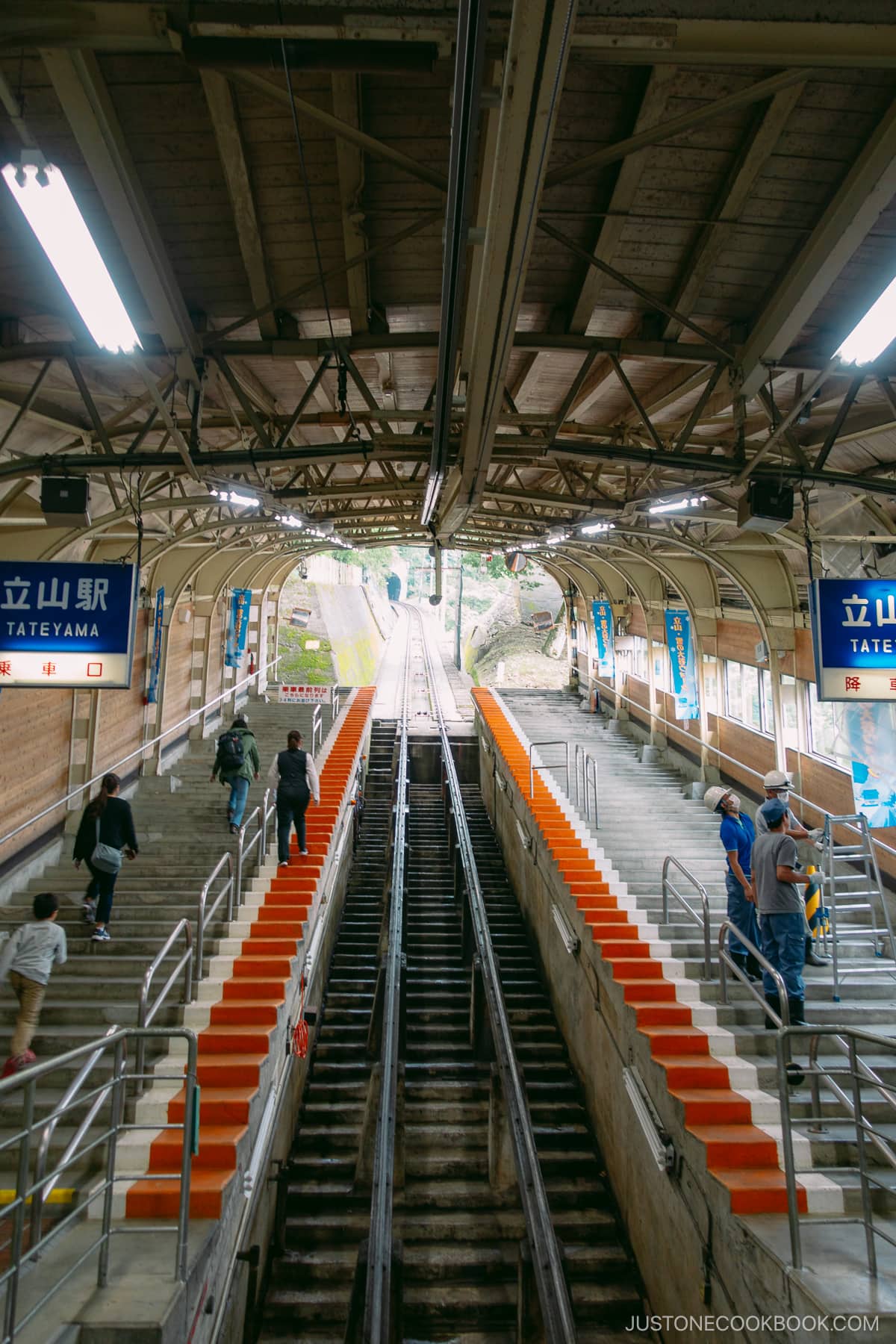
When you step on board, you ascend a flight of stairs at the station, almost as if you’re about to embark on an amusement park ride. Once inside the car, you can descend the steps to catch the cool view as the car leaves the station.
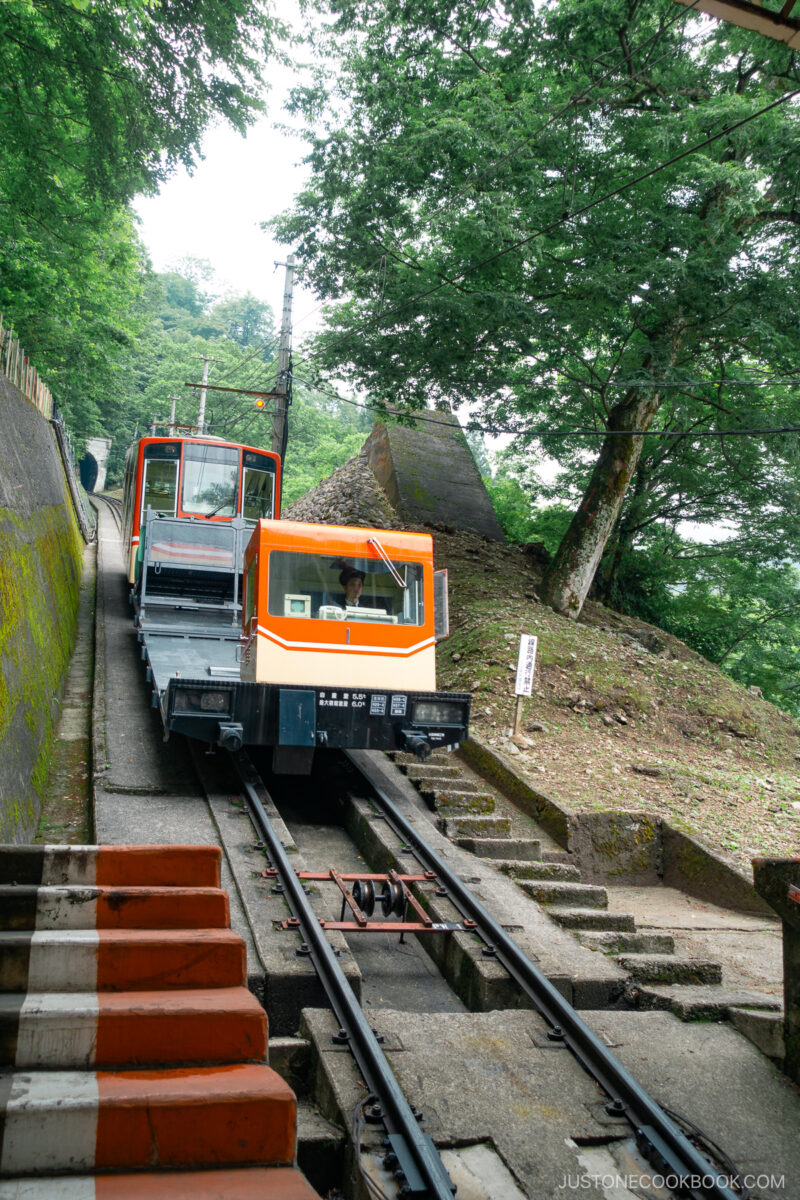
It was foggy on the day we visited, so we mostly encountered misty landscapes and trees. Nonetheless, we had an enjoyable ride and embraced the idea that part of traveling is appreciating whatever comes our way.
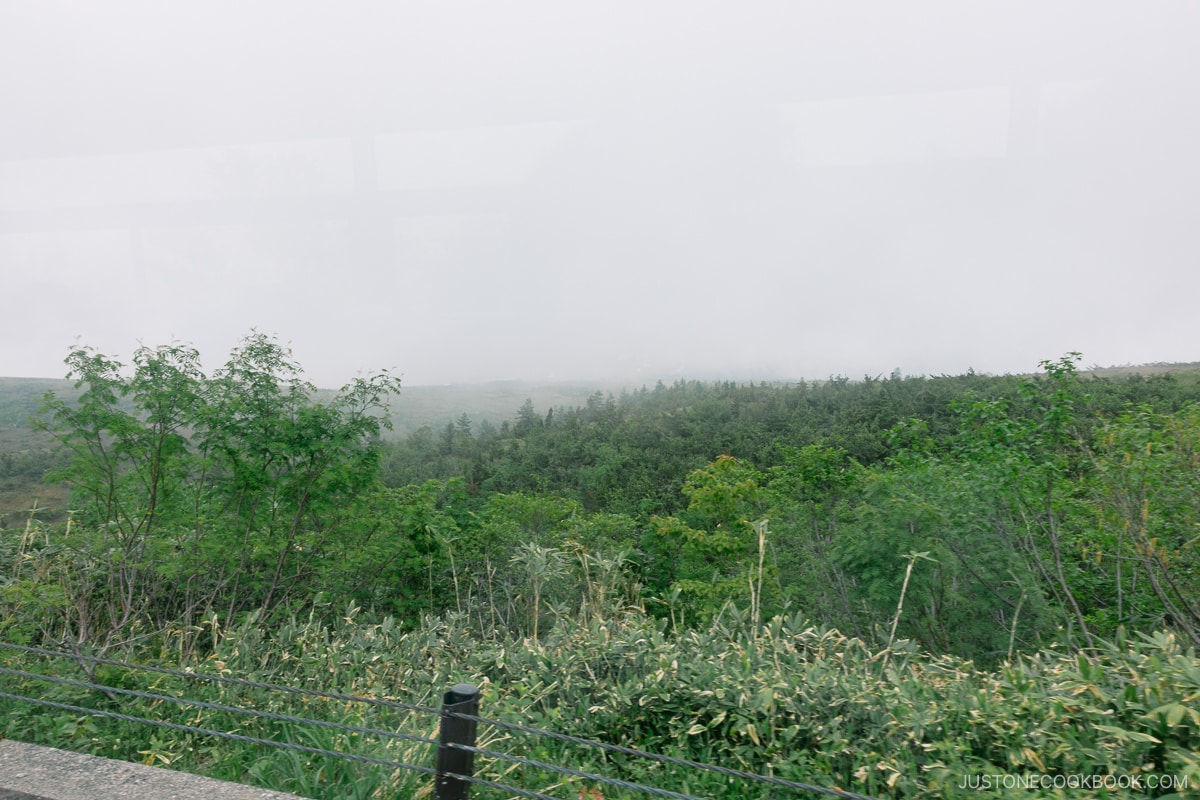
Bus Ride from Bijodaira to Murodo
At Bijodaira (美女平) station, we boarded the bus bound for Murodo (室堂).
It was mid-June, and the weather was quite warm when our journey began at Bijodaira. There was no sign of snow in the vicinity. The ride from Bijodaira to Murodo takes approximately 50 minutes.
On the way up, most parts of our journey were shrouded in thick fog. Inside the bus, a video played on the TV screen, explaining various points of interest along the way. Unfortunately, most of the time, all we could see was a blanket of white fog.
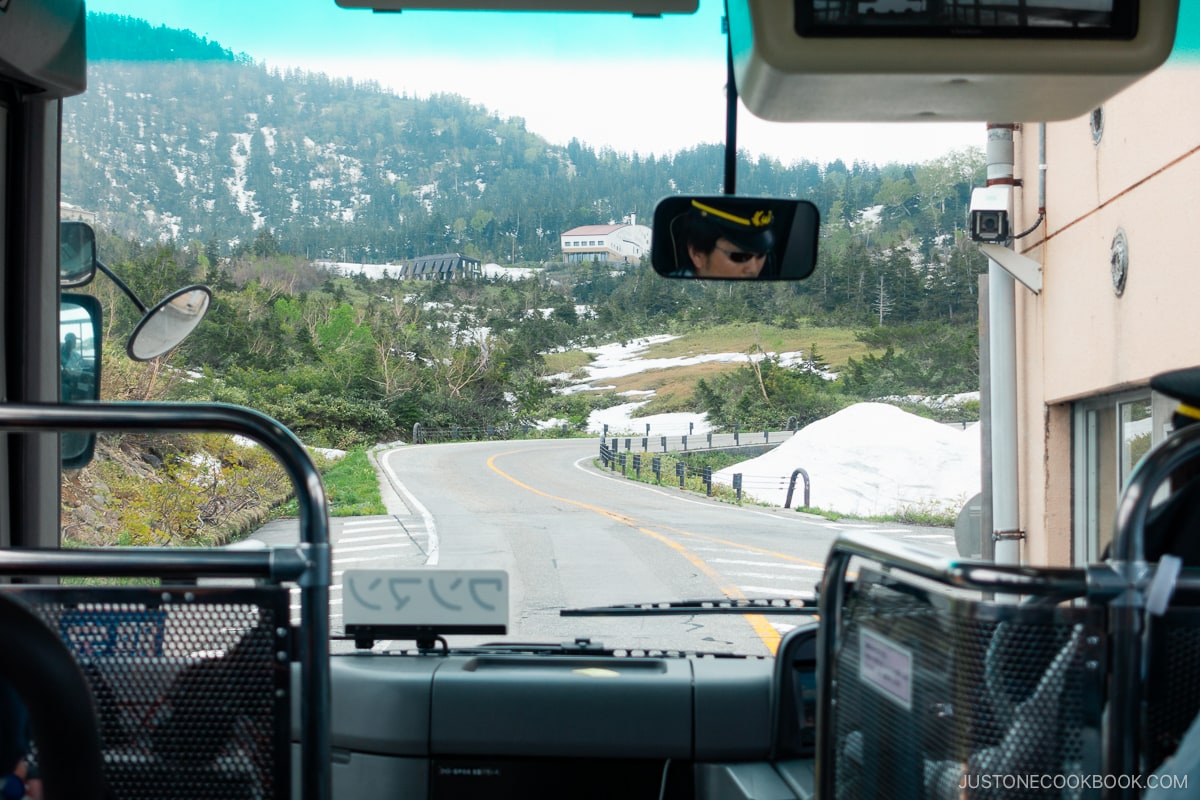
About 20 minutes into the ride, the fog began to lift, revealing patches of snow. Our children’s excitement started to build!
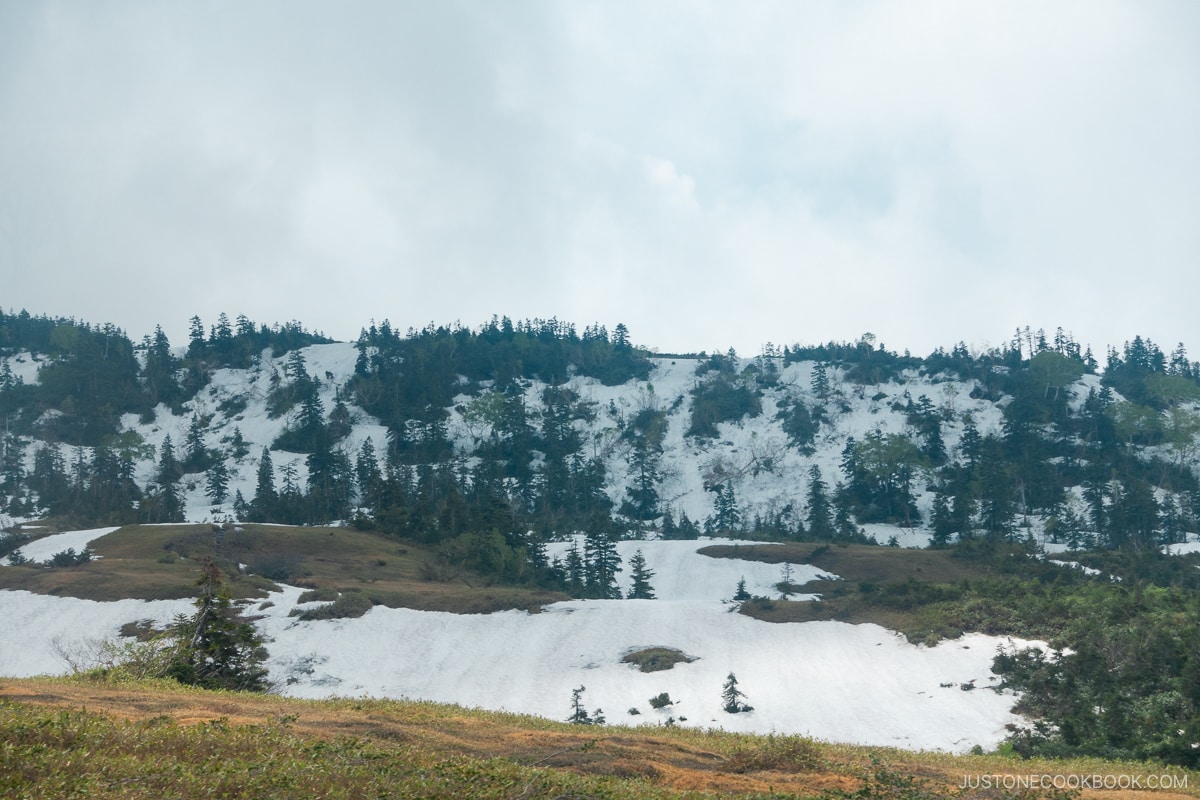
30 minutes and midway into the bus ride, we saw the Midagahara Hotel (弥陀ヶ原ホテル) nestled within the picturesque Midagahara Highlands (弥陀ヶ原高原).
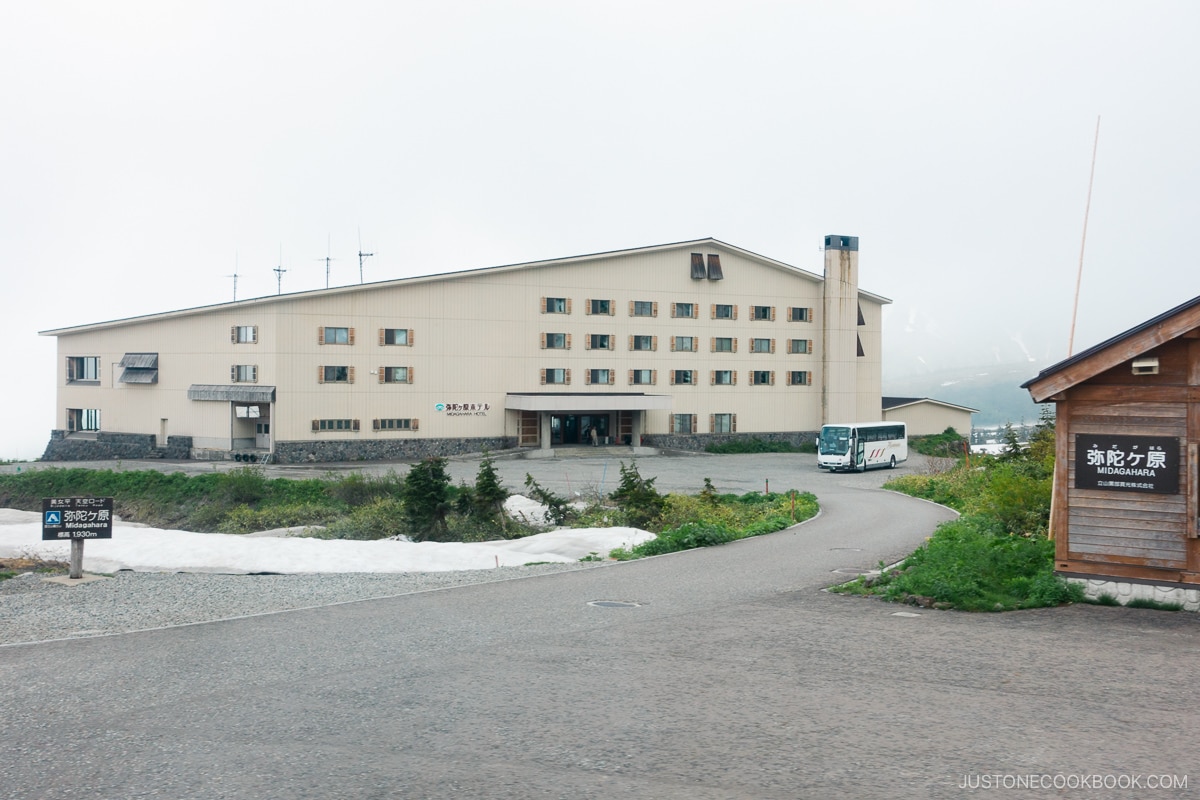
While the Snow Corridor is the main attraction during spring, the Tateyama Kurobe Alpine Route remains highly popular among hikers during summer and fall, thanks to its stunning colors and mountain landscapes.
Shortly after crossing the Midagahara Highlands, the scenery underwent a dramatic transformation. Every inch of the ground was blanketed in snow. As far as our eyes could see, there was nothing but snow! We had officially reversed the season, transitioning from summer to winter.
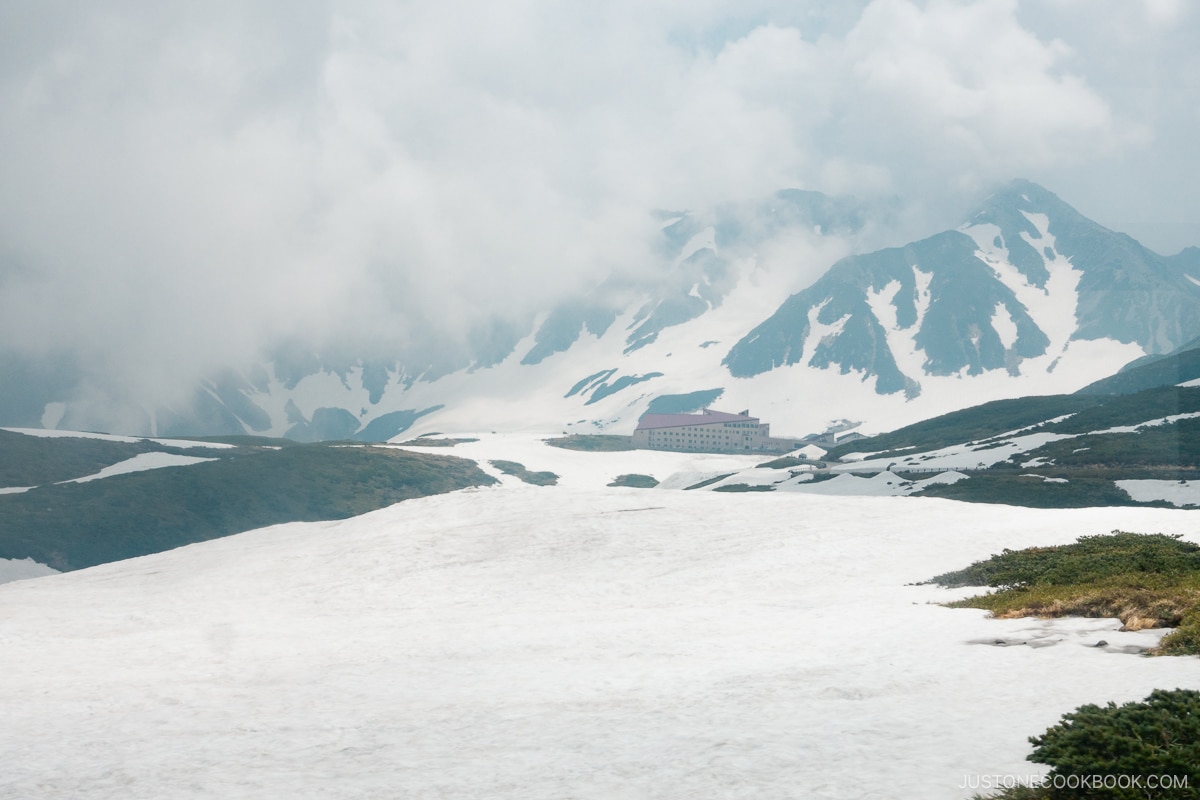
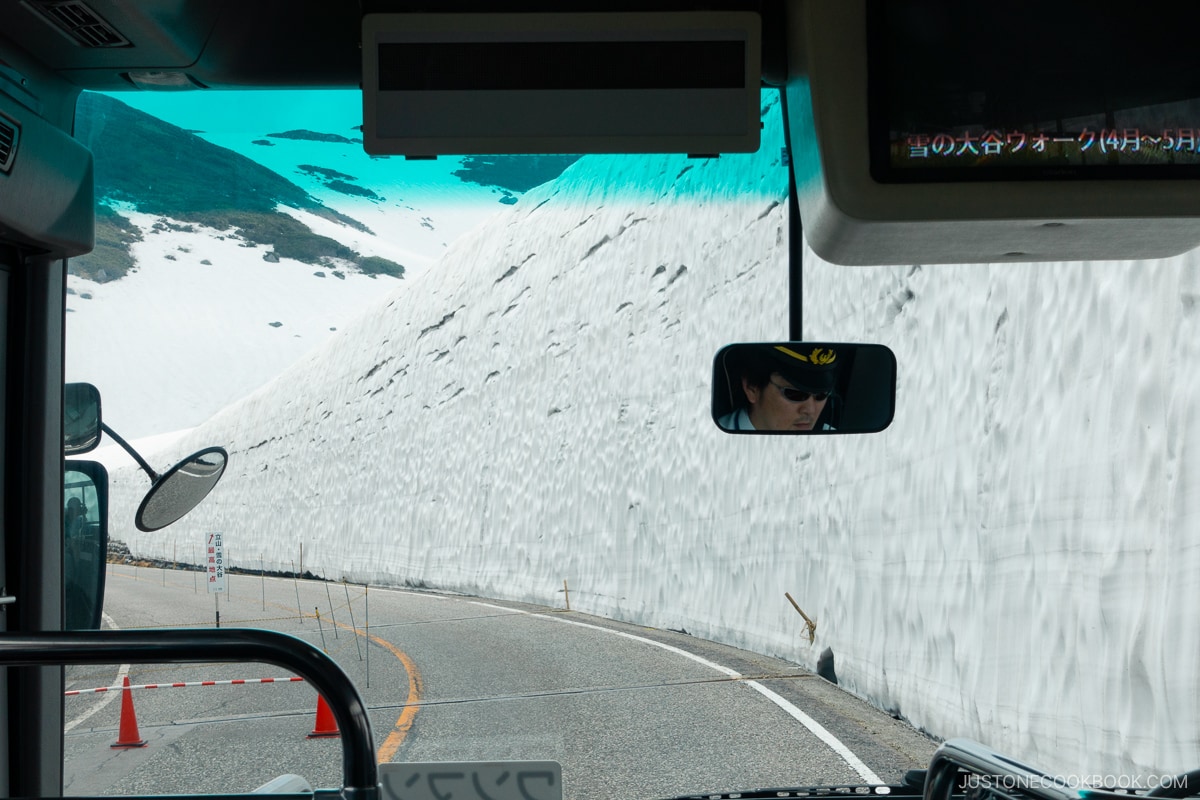
Tateyama Kurobe Alpine Route at Murodo Station: Snow Corridor and Culinary Delights
When the bus arrived at Murodo, we quickly put on our jackets to brace for the chilly weather. The Murodo terminal is a fairly large structure and it’s connected to Hotel Tateyama. (ホテル立山).
From the Terminal, it’s just a quick 5-minute walk to the Snow Corridor (Yuki no Otani).

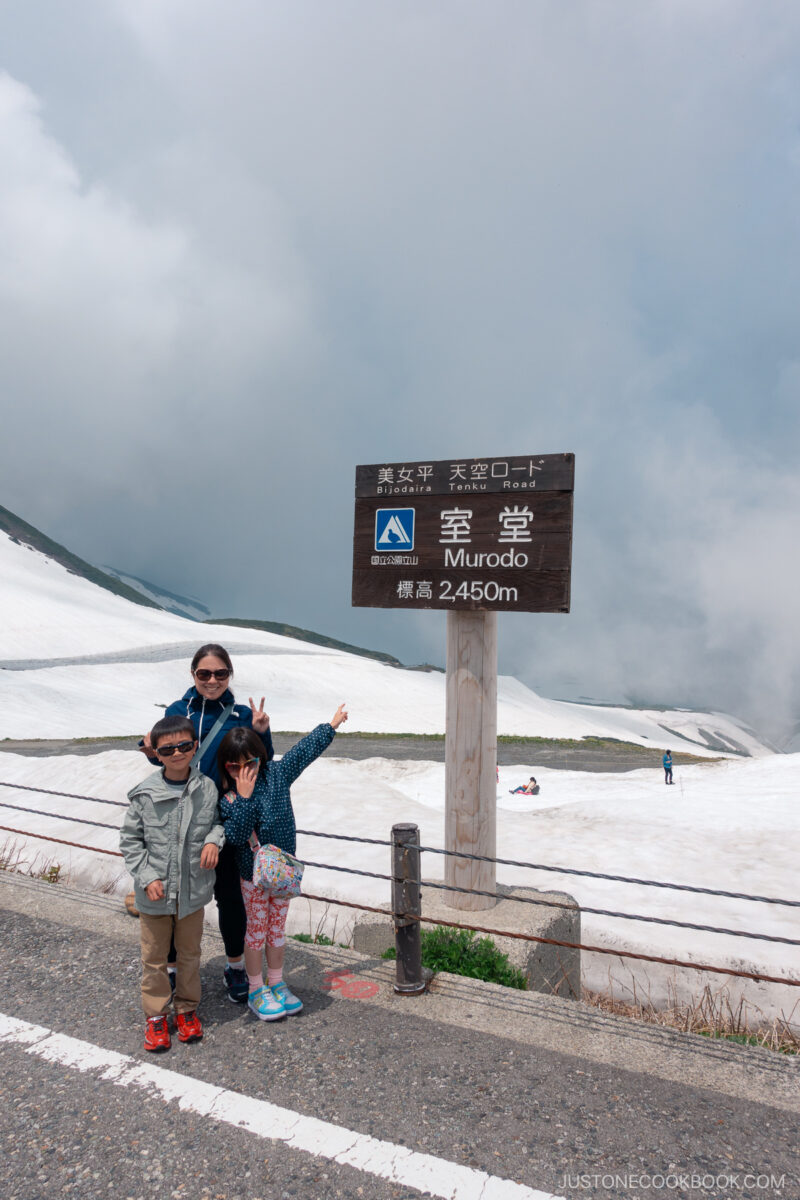
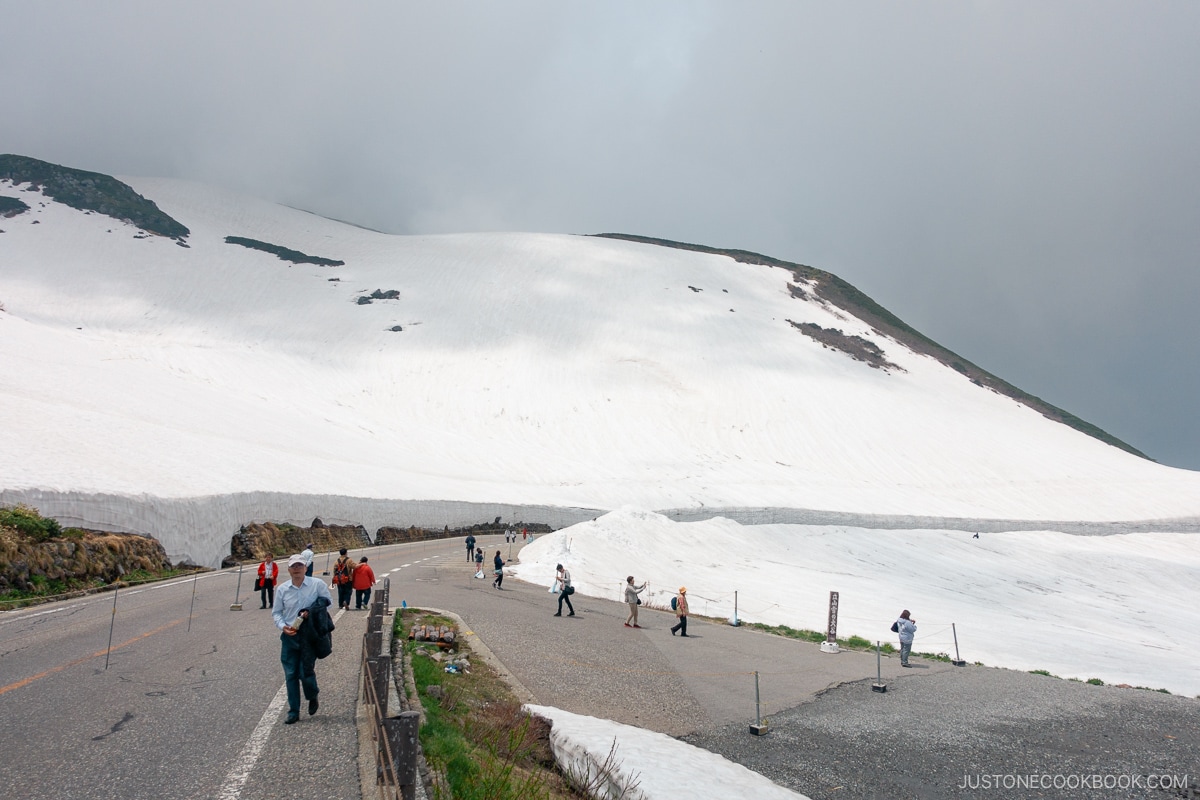
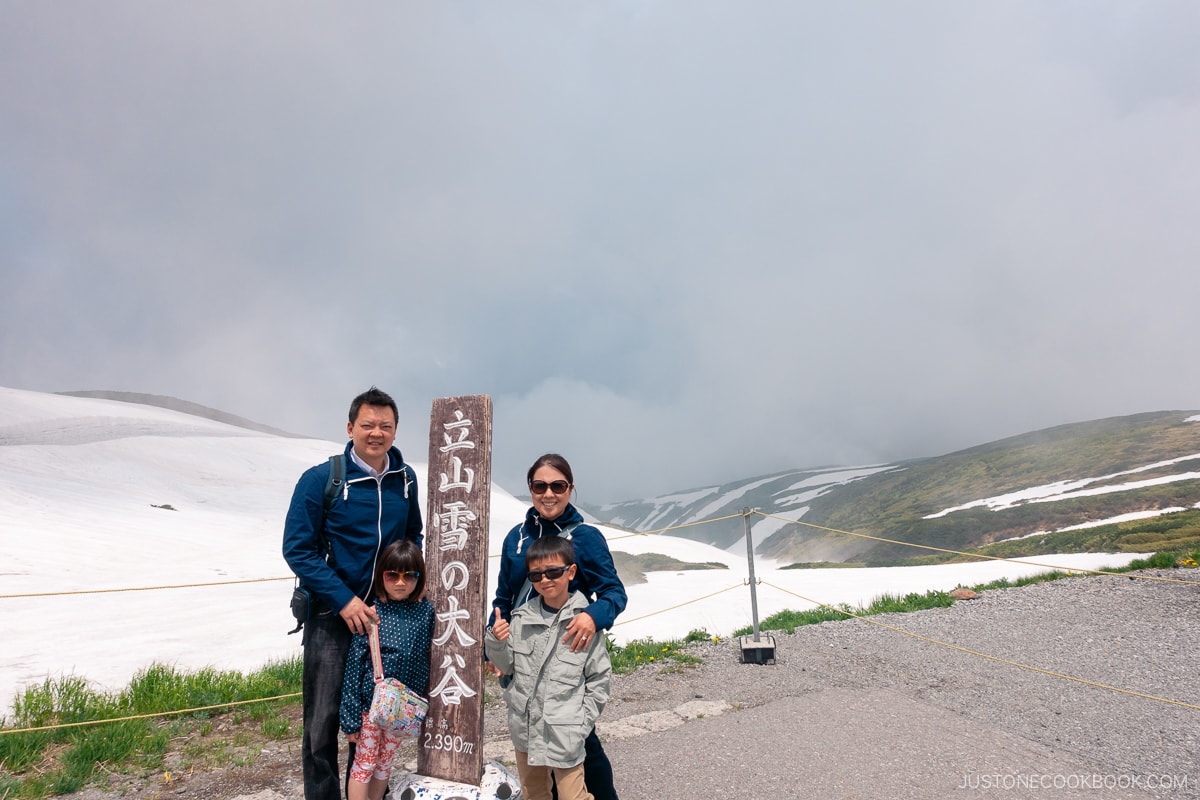
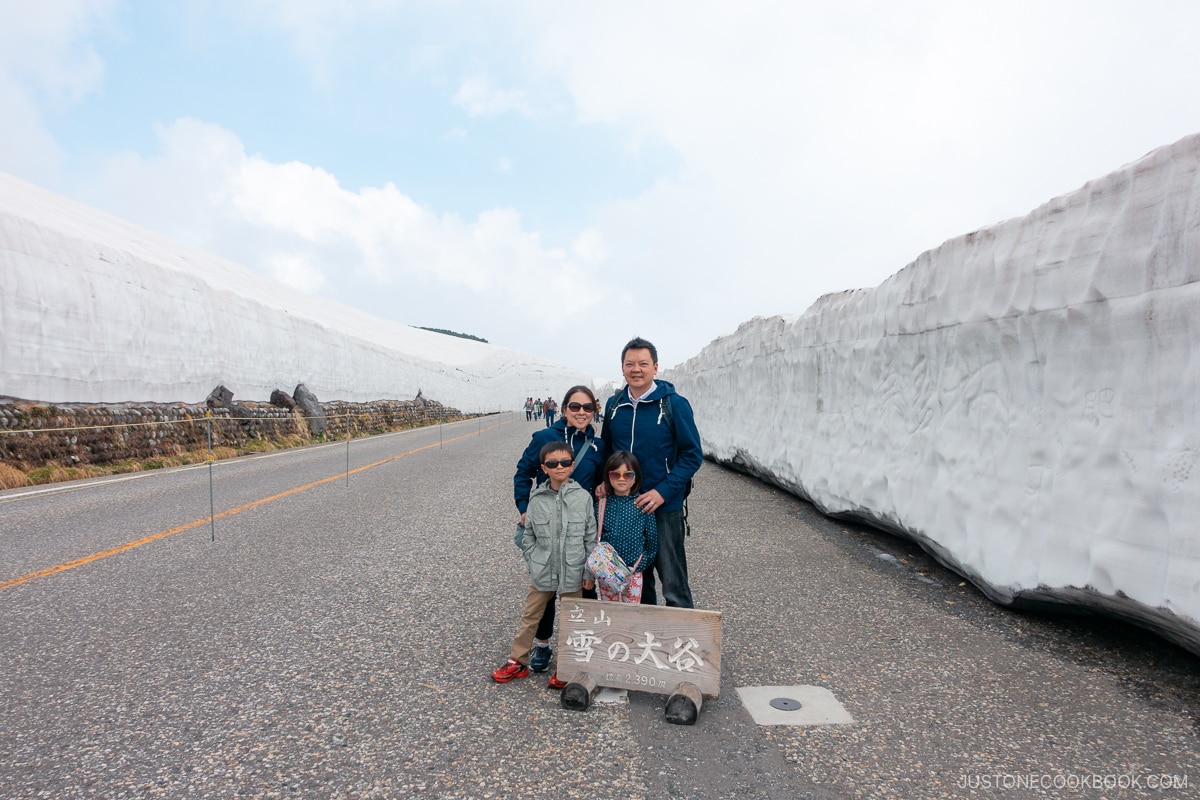
When we visited on June 17th, the snow still stood impressively at 11 meters. You can observe the transformation of the Snow Corridor over the course of two months on the Alpine Route’s website.
Apart from the Snow Corridor, we also discovered other attractions, such as a pyramid made of snow and a sledding hill.
The sleds were available for free, but we would advise wearing waterproof pants as our children’s attire ended up entirely soaked after sledding.
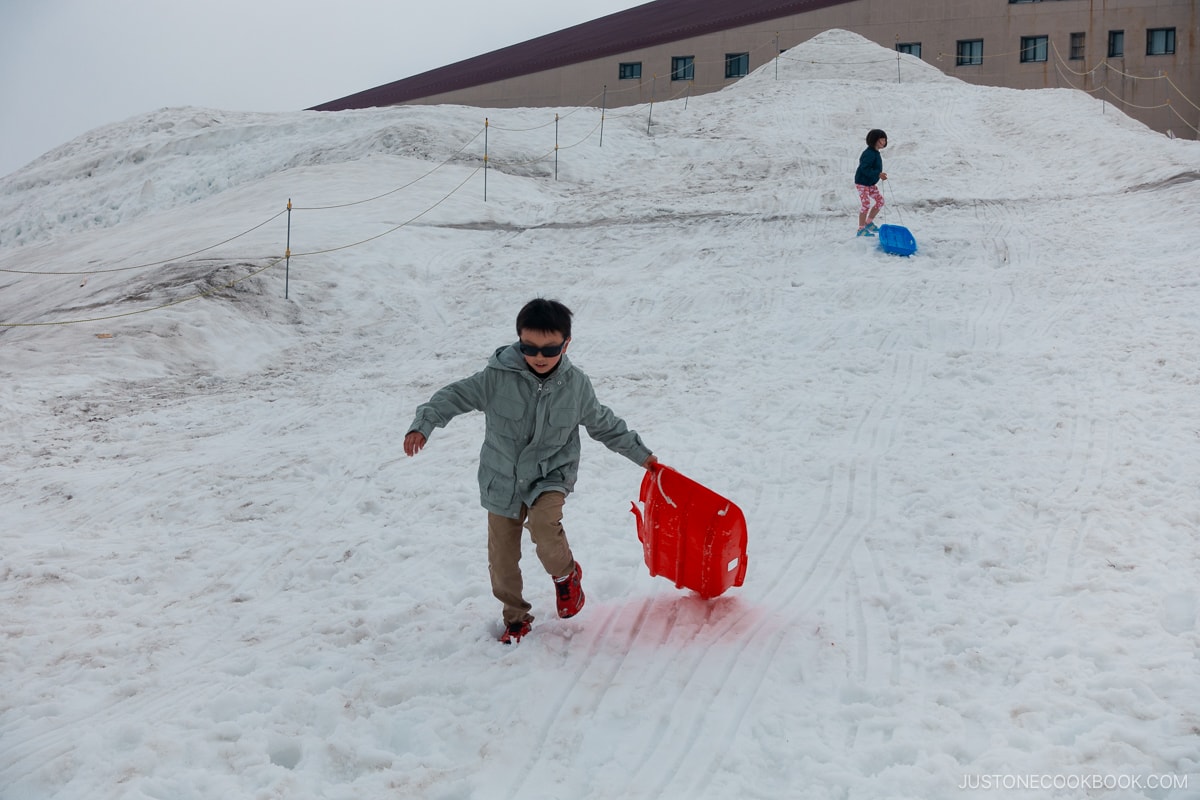
Restaurant Tateyama
After having a great time in the snow, our appetites kicked in and ready to eat. We made our way to Restaurant Tateyama (立山レストラン) located on the 2nd floor of the Murodo Terminal (室堂ターミナル) building.
Given that we kept seeing the local specialty, white shrimp (白海老), on menus throughout our trip in the area, we decided to give it a try. It arrived atop a bed of rice, accompanied by soup and a salad. The deep-fried shrimp was amazing, especially when paired with the sweet dashi sauce.
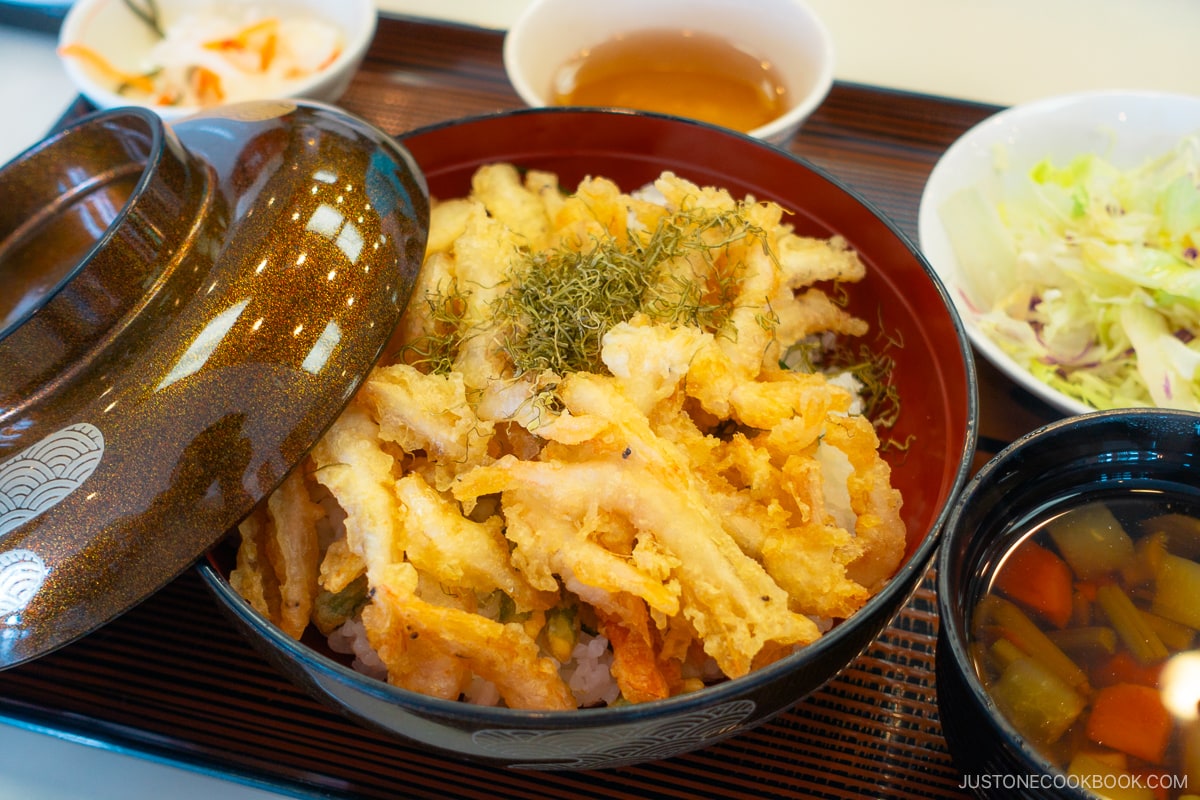
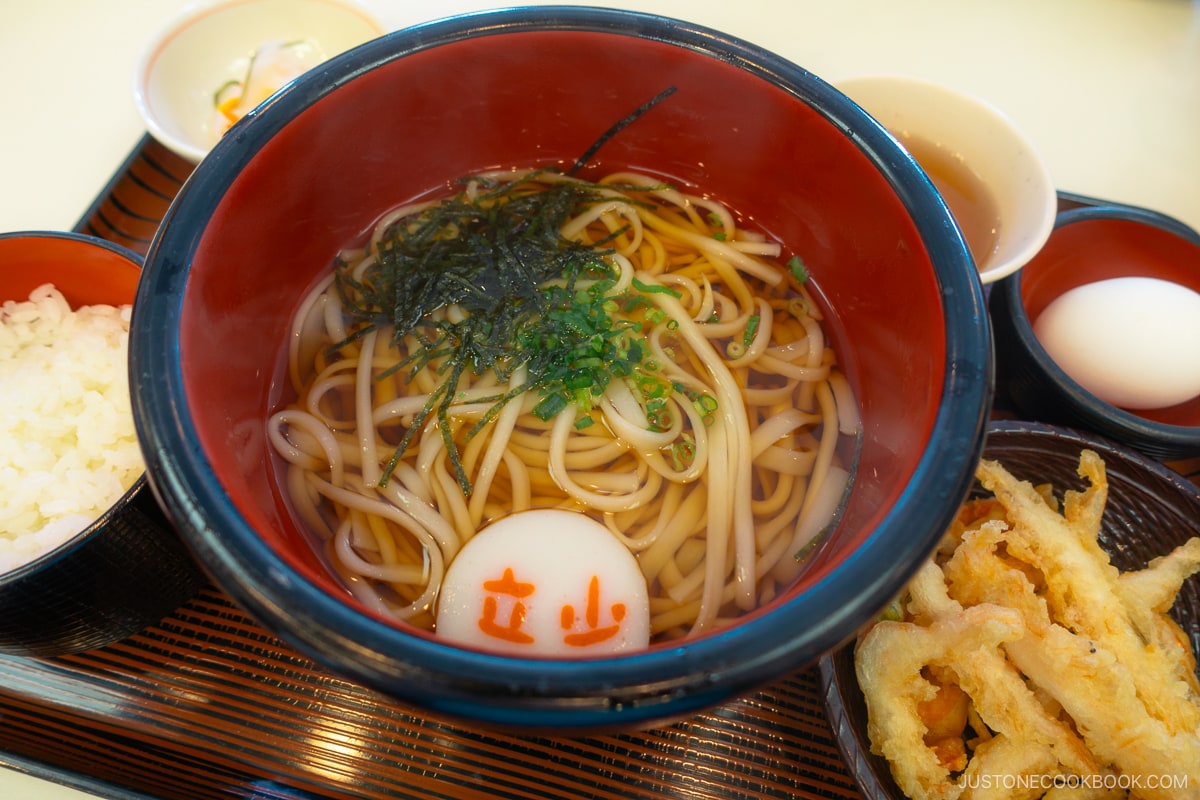
In the Toyama region, you’ll find udon noodles that differ from regular Japanese udon. These are known as Himi Udon (氷見うどん), and they are notably thinner. We couldn’t resist the temptation to sample them for our lunch. The simplicity of the udon noodles paired perfectly with the deep-fried white shrimp on the side.
During our lunch, we observed skiers ascending the snow-covered mountains, carrying their skis. Where could they be heading?
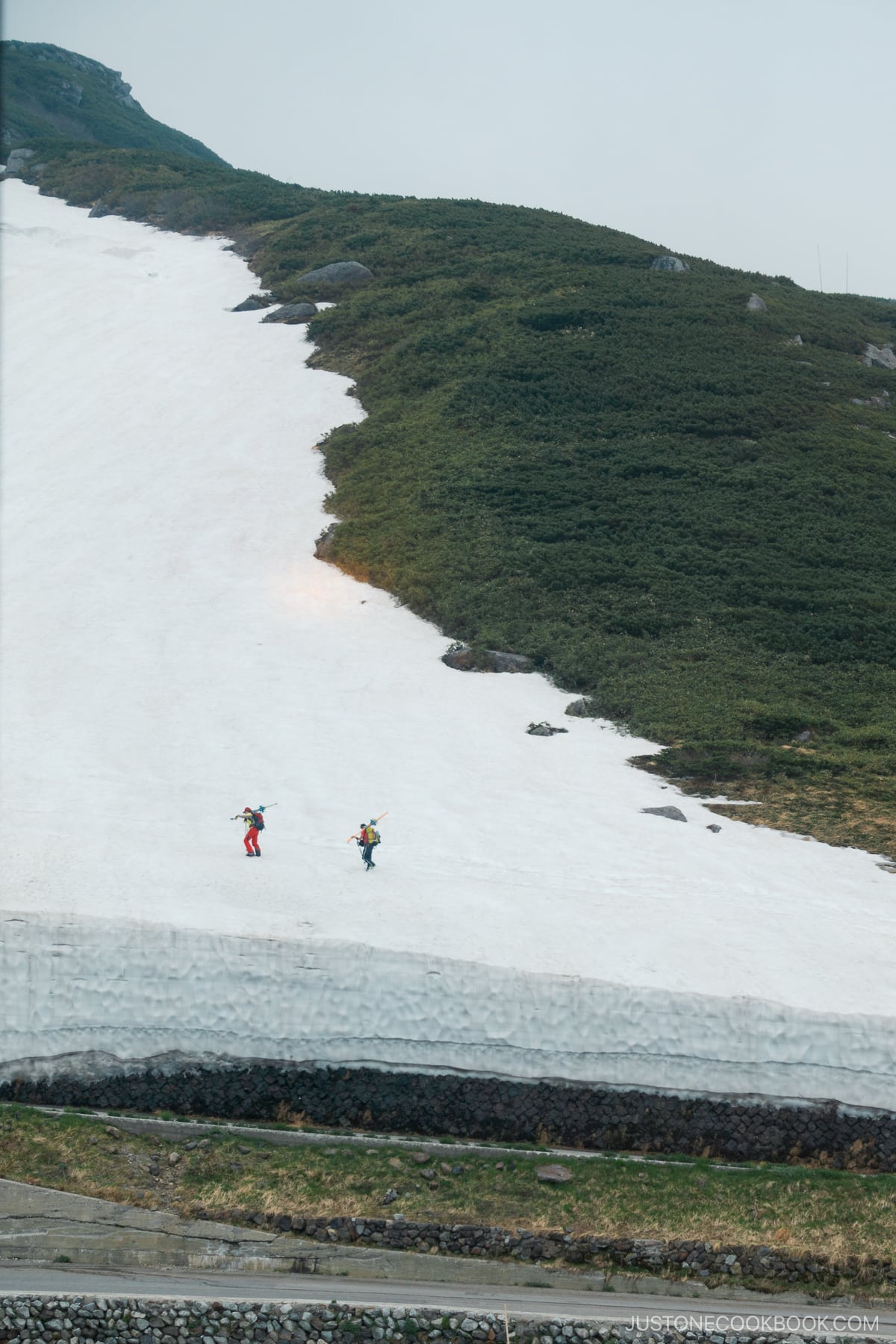
So that wraps up our memorable visit to the Kurobe Alpine Route! The experience was incredibly beautiful, and I wholeheartedly recommend it to anyone who loves the snow.
You can also visit during other seasons and enjoy a distinct kind of beauty. In the summer, the vibrant greenery surrounding Shomyo Falls, Japan’s tallest waterfall, is simply breathtaking. From late September through October and into early November, the landscape transforms into a tapestry of gold, red, and orange as the autumn leaves paint a picturesque scene. Regardless of the season you choose, the Kurobe Alpine Route never fails to leave you in awe!
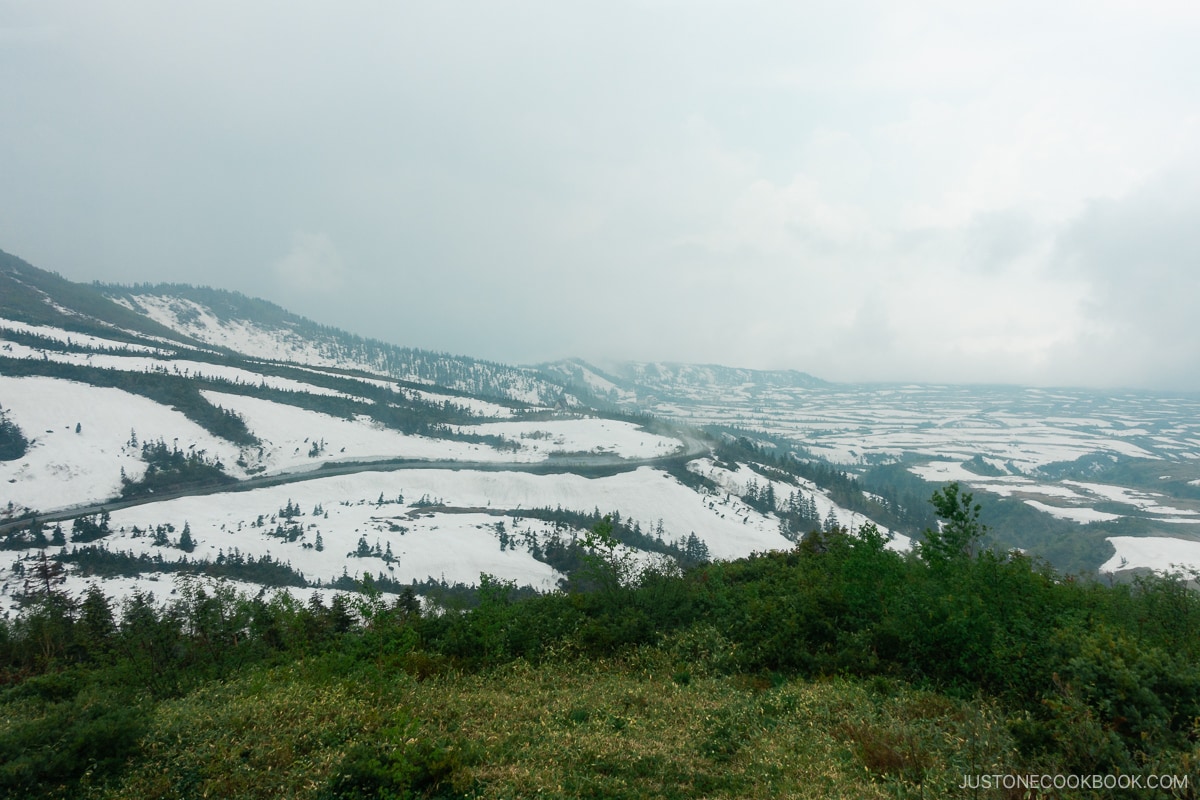
What to do in Toyama: Historic Castles and Memorable Dining
Toyama Castle
After our memorable trip to the Tateyama Kurobe Alpine Route, we still had some time left in Toyama, so we decided to visit Toyama Castle (富山城). Although there aren’t too many tourist attractions in Toyama, the castle offered a glimpse into the region’s rich history.
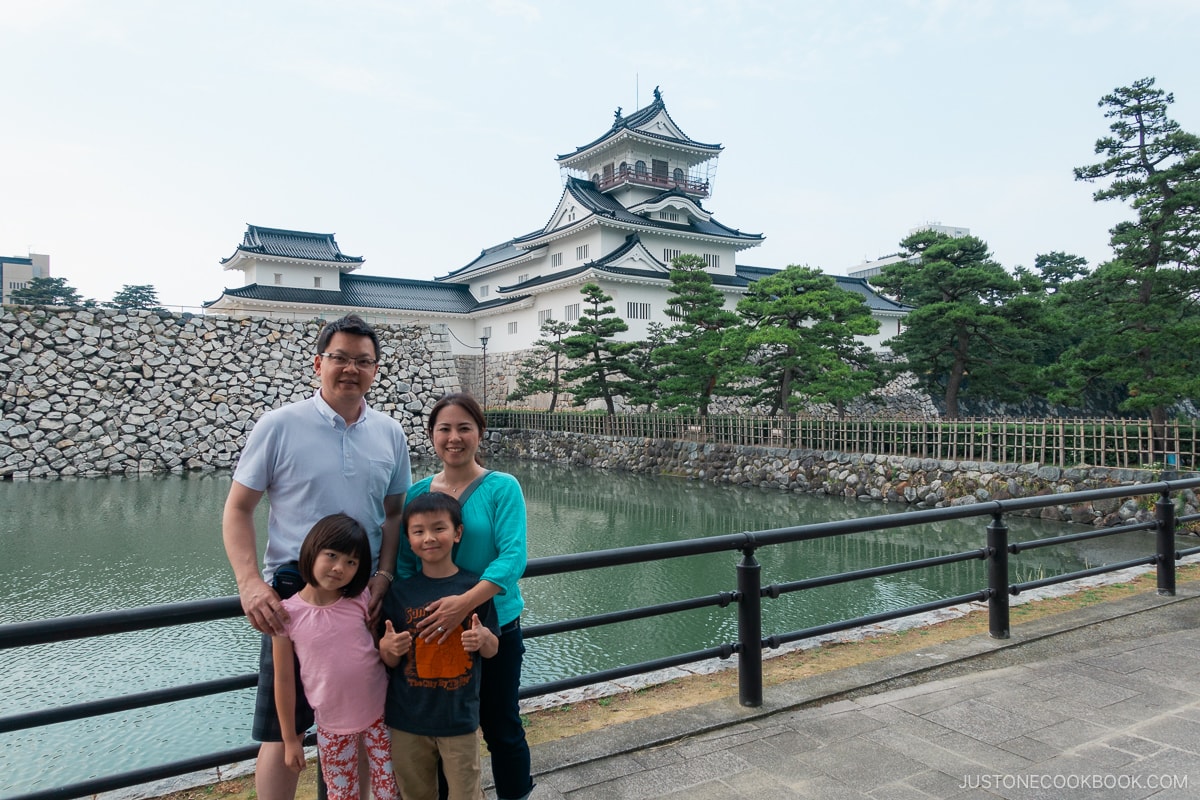
The current Toyama Castle is a replica made of concrete and steel, and it holds great historical significance for the region. The original castle, dating back to 1543, suffered destruction during the late 1500s due to warfare. It was rebuilt many times throughout history but subsequently destroyed by an earthquake and fire.
Today, the castle serves as the home of the Toyama City Local History Museum (富山市郷土博物館), which highlights the history of Toyama Castle. To accommodate international visitors, the museum provides binders with English explanations.
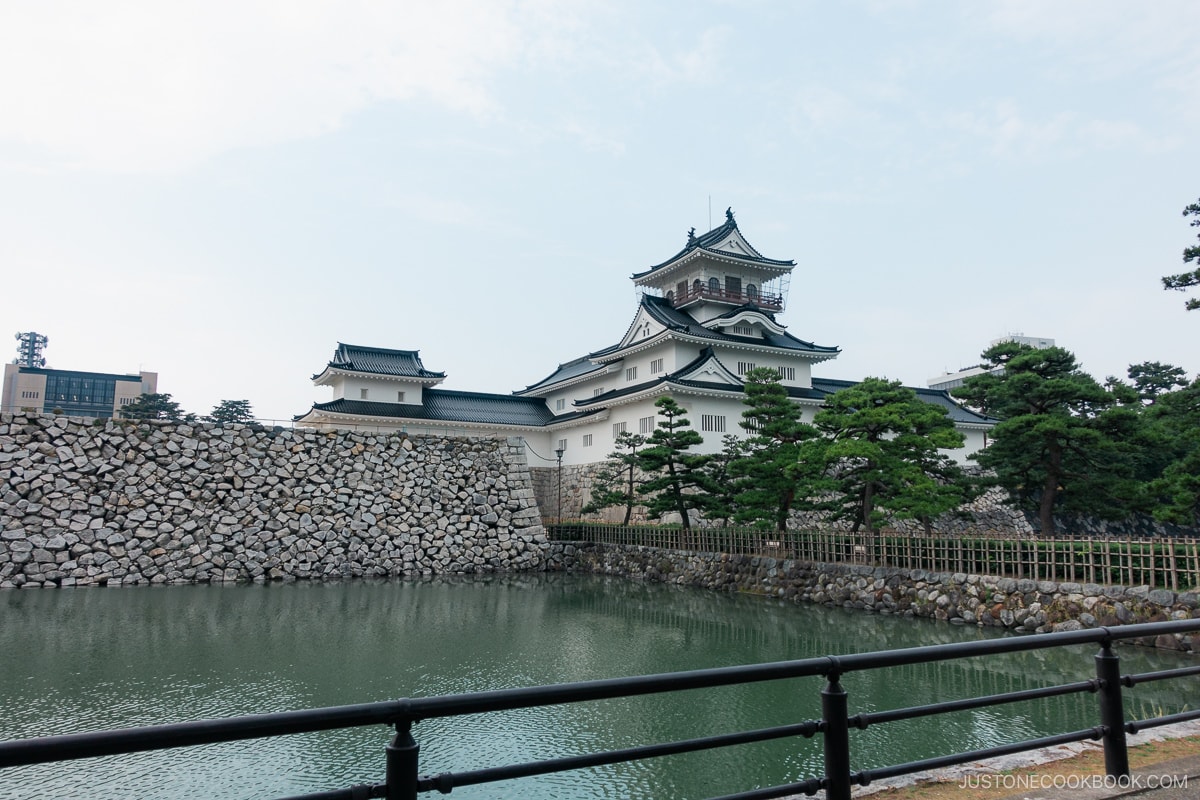
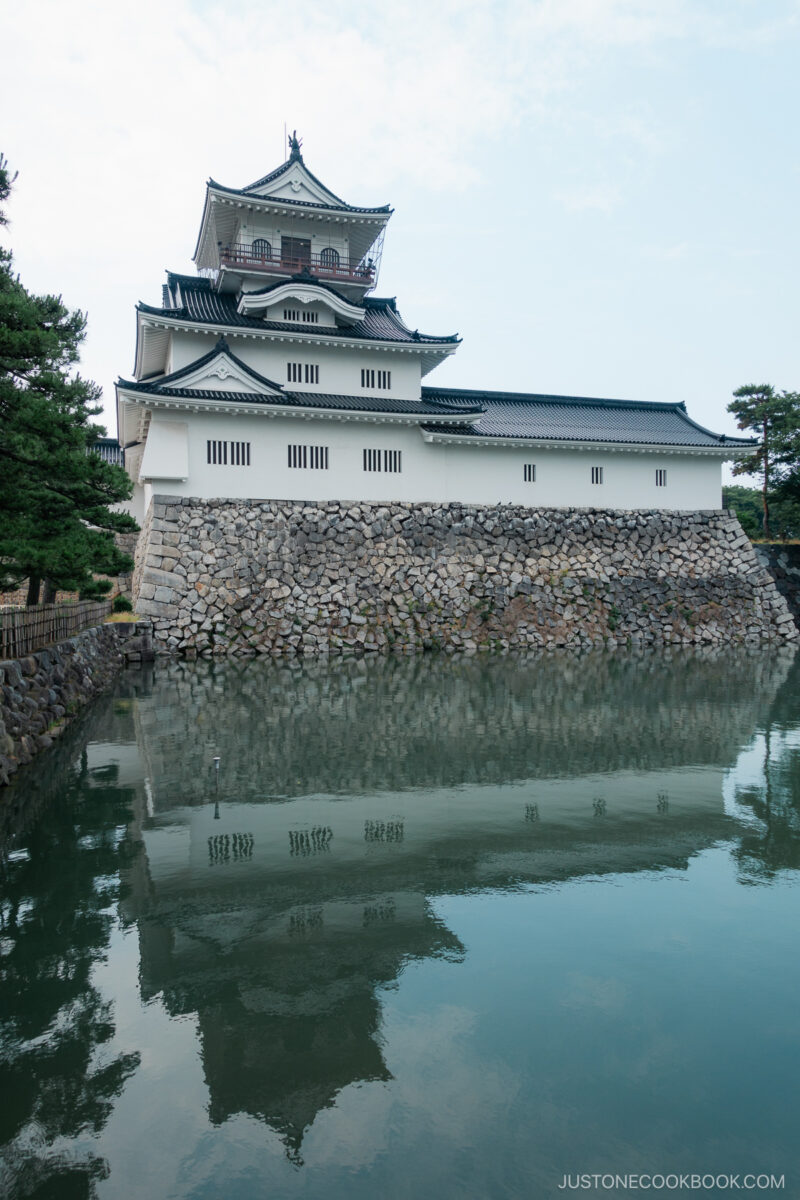
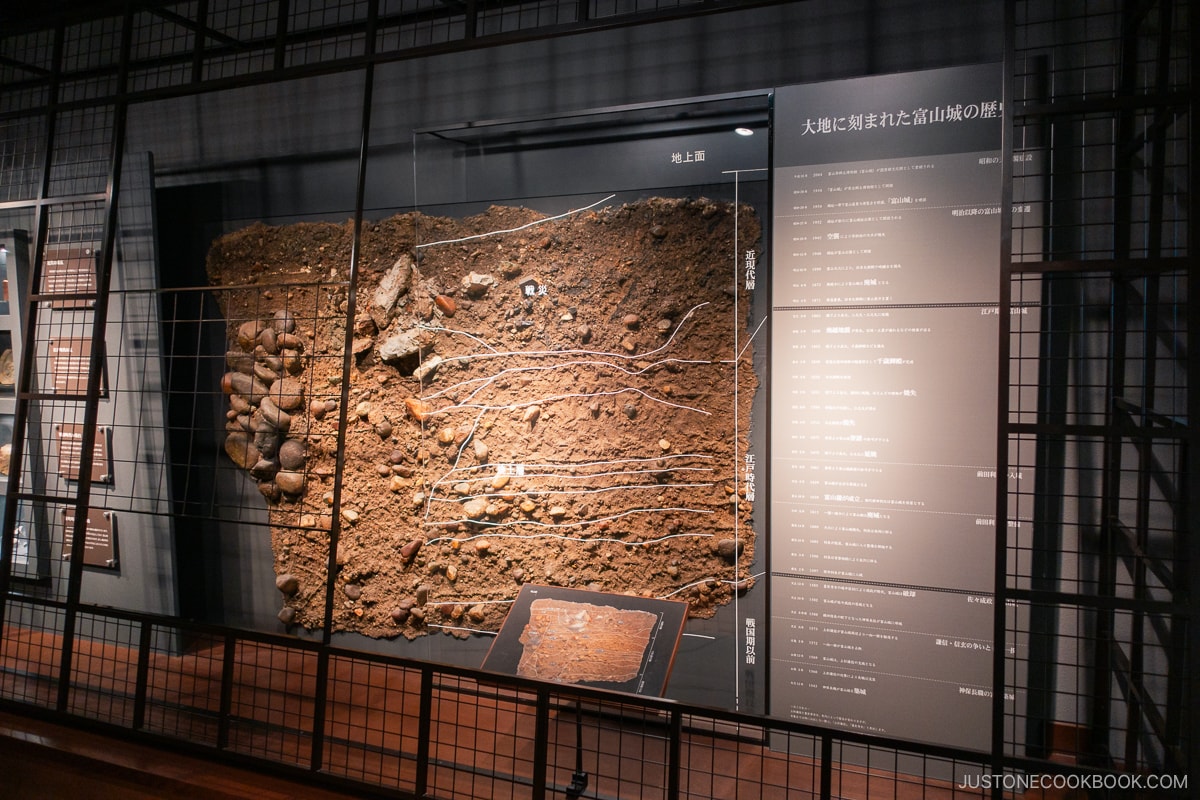
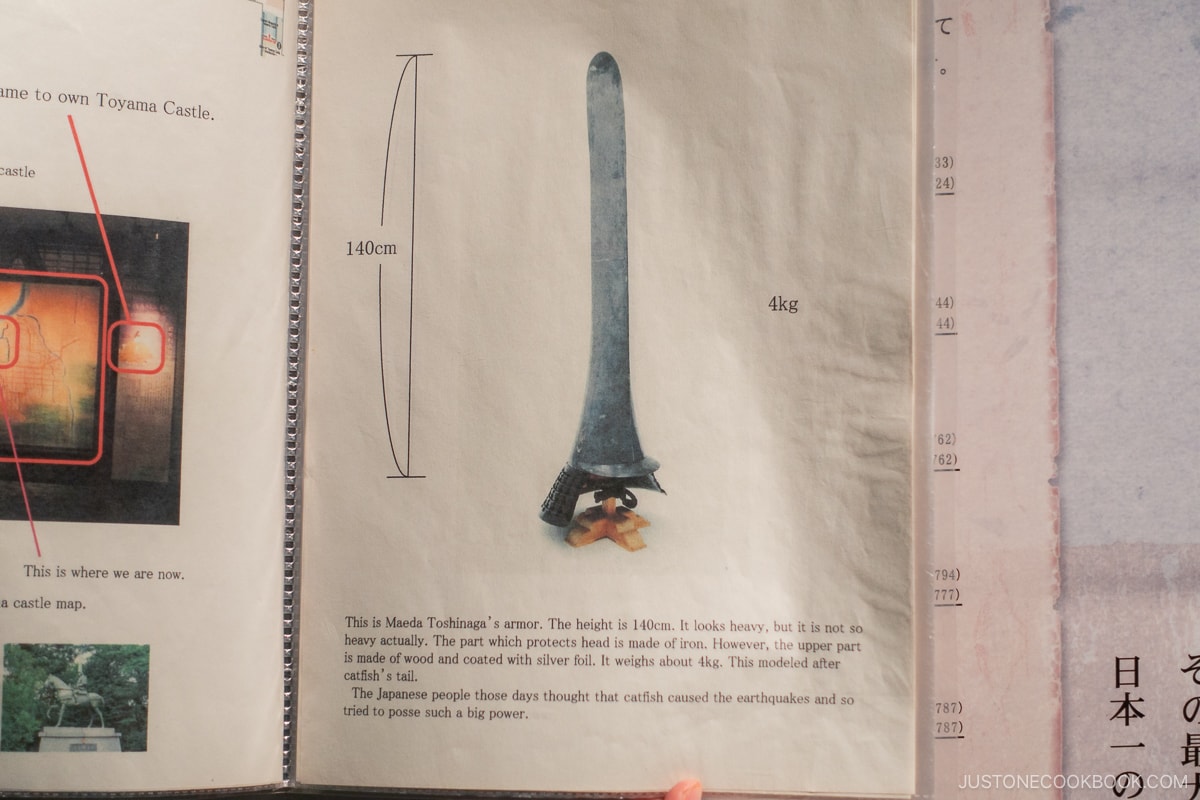
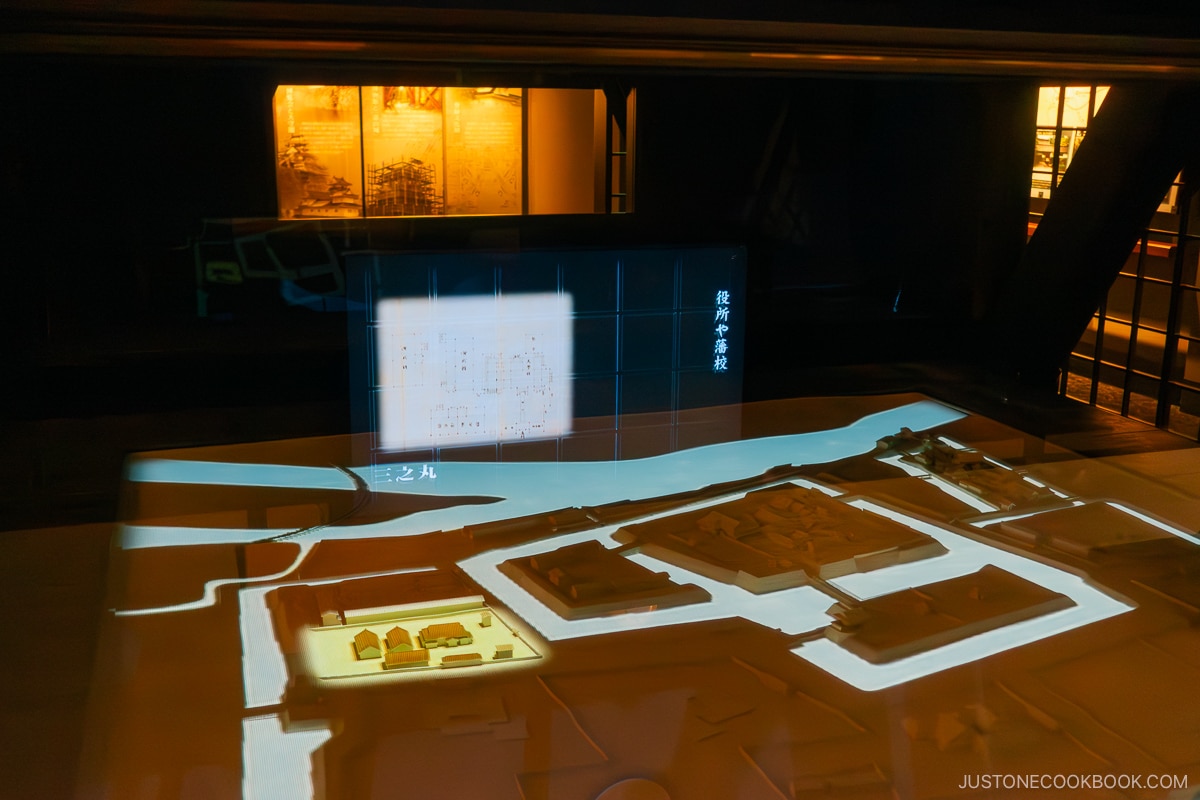
You can also explore Toyama Castle Park to enjoy a relaxing walk and soak in the beautiful scenery.
Izakaya Dai 酒菜工房 だい: Top Recommendation near Toyama Station
For dinner, we dined at the popular local izakaya, Dai (酒菜工房 だい). Oh my, the food was absolutely incredible!
We were impressed with its attention to detail, from tableware to dish presentation and food preparation. Each dish was delicate and refined.
Our meal began with small appetizers, including a Tomato Salad served in an elegant glass bowl. The vibrant colors and fresh flavors were the perfect start to our dinner.
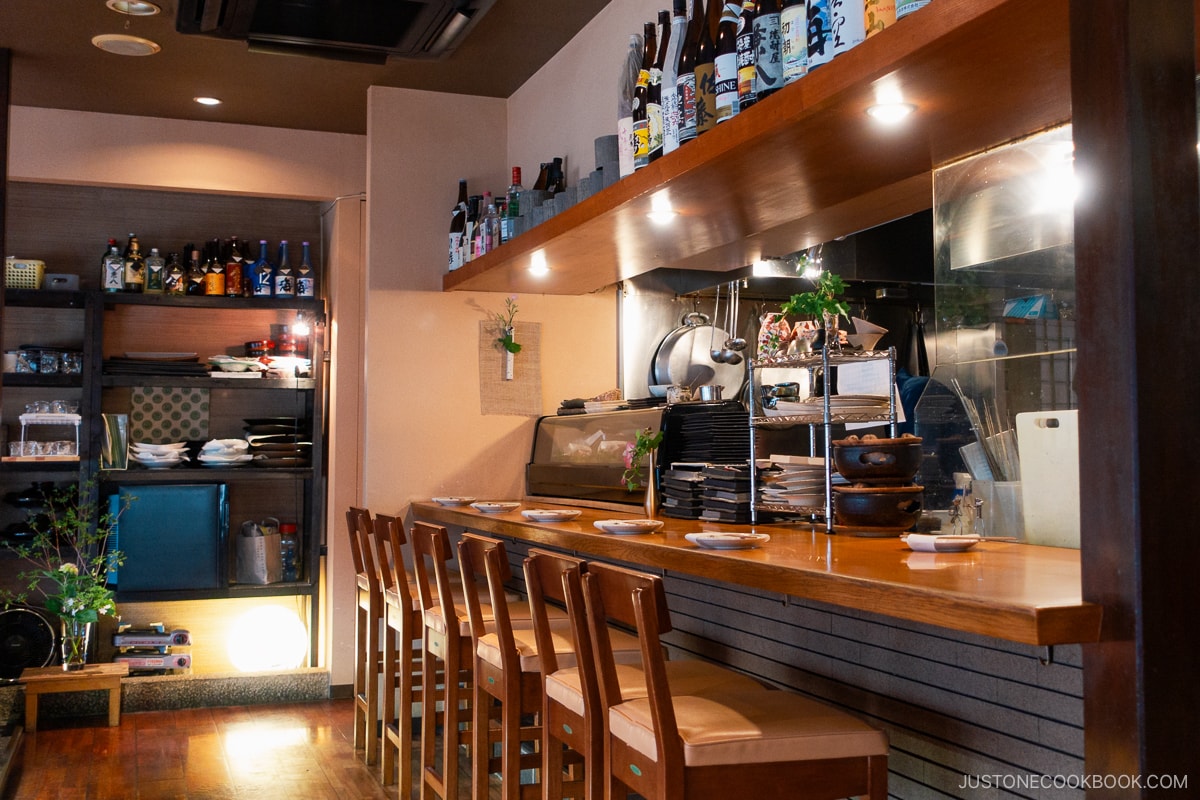
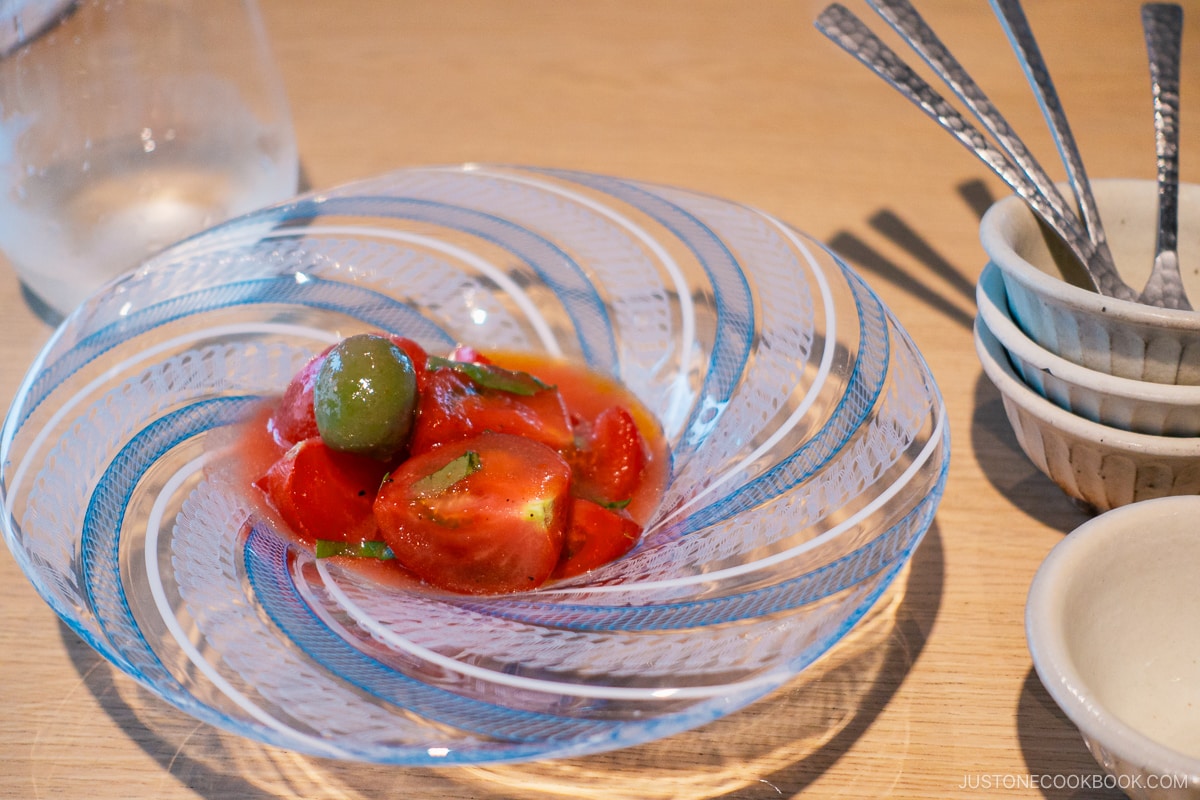
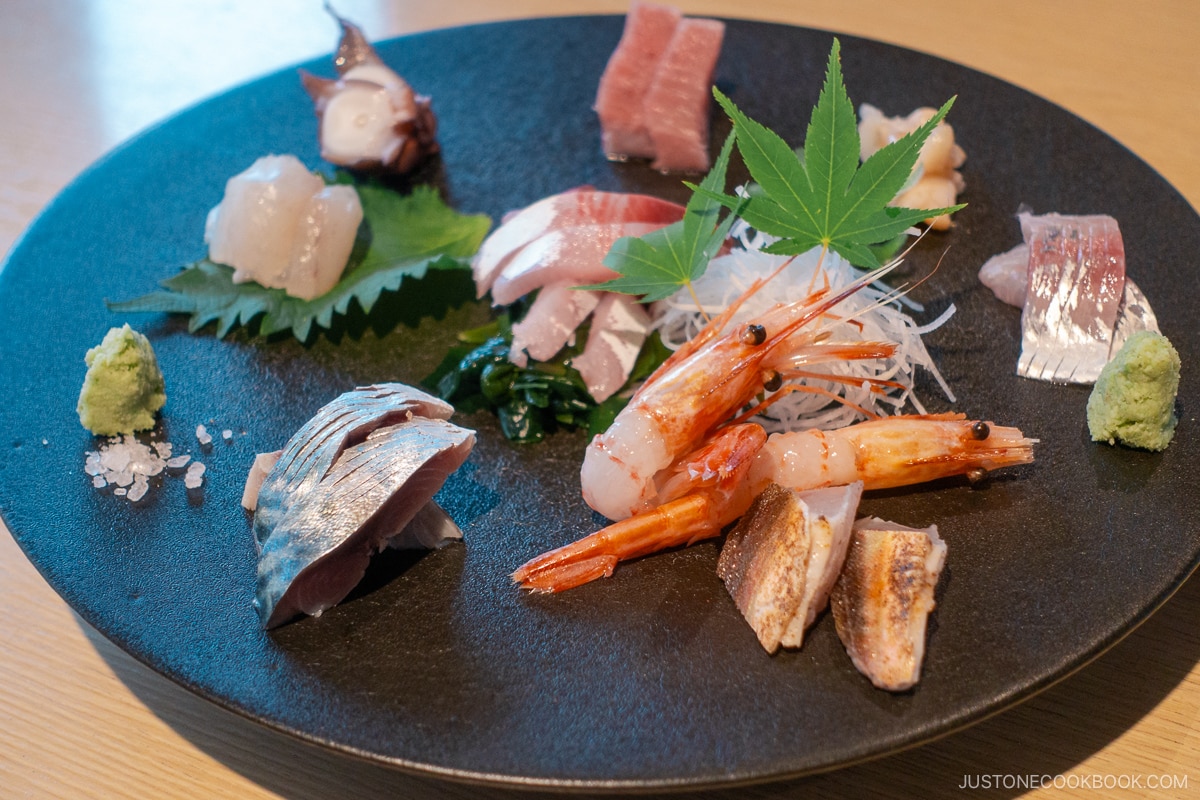
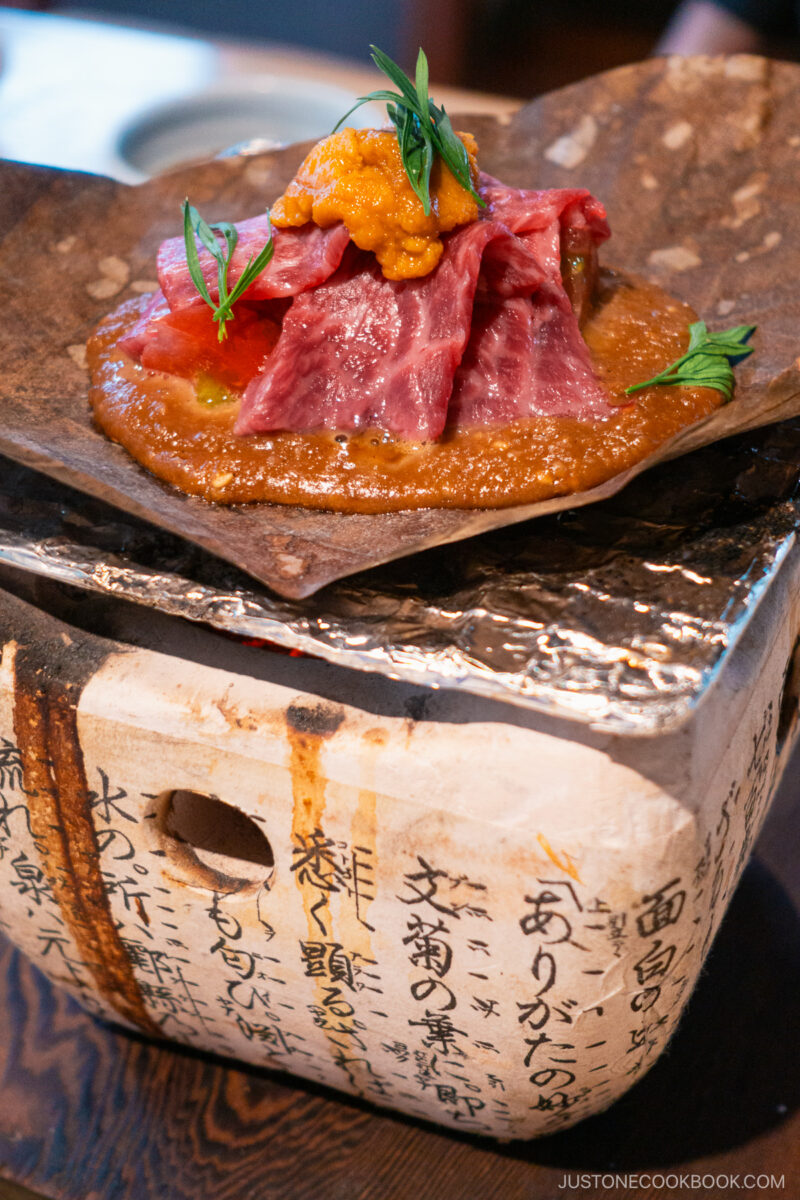
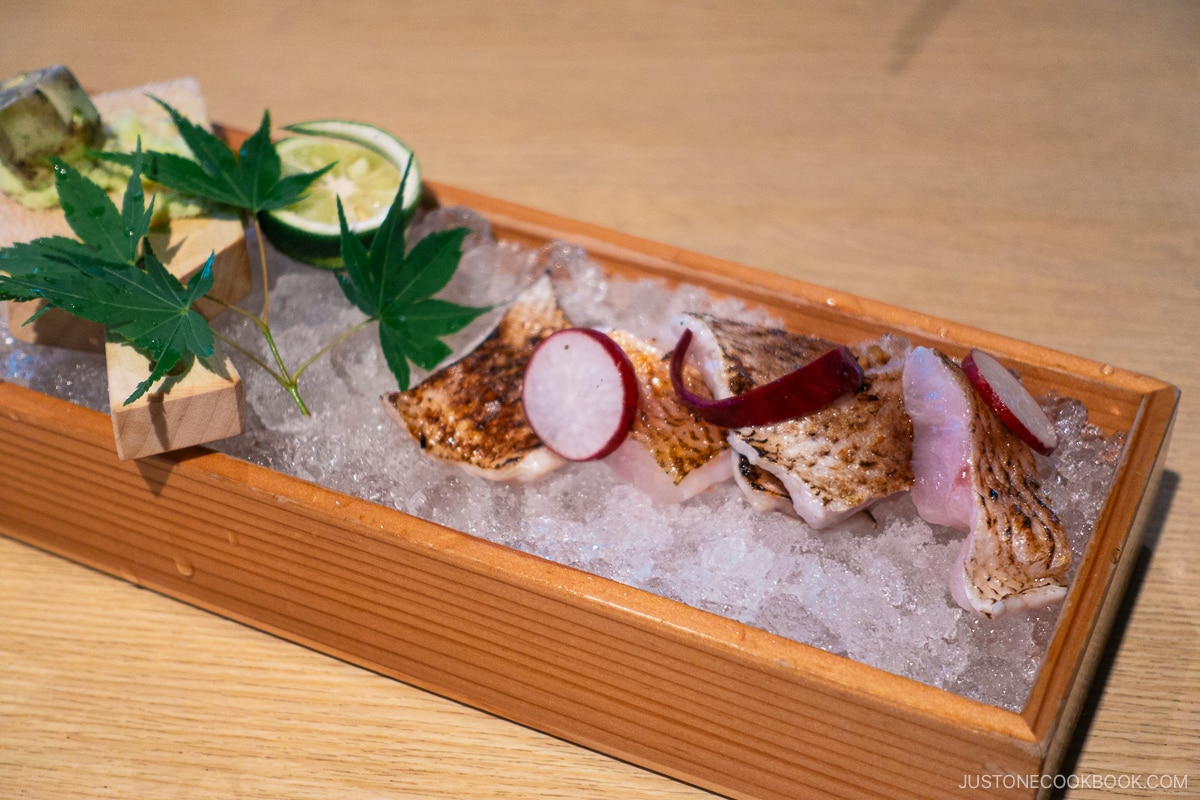
Creative Dishes at Izakaya Dai
One of the highlights of Izakaya Dai was this beautiful assorted sashimi (9 kinds) presented on a black plate with exceptional fresh seafood. Toyama Bay is located next to the Sea of Japan so has access to some delicious seafood.
One of the highlights at Izakaya Dai was the beautiful assorted sashimi, featuring 9 kinds of exceptionally fresh seafood, presented on an elegant black plate. Thanks to Toyama Bay’s proximity to the Sea of Japan, they have access to some of the most delicious seafood.
The selection we enjoyed included Himi Maguro 氷見まぐろ (fatty tuna) and Baigai バイ貝 (ivory shell), Aji あじ (horse mackerel), Houbo ほうぼう (red gurnard), Shime Saba しめ鯖 (cured mackerel), Hirame Kombu-Jime ヒラメの昆布じめ (Japanese turbot cured in kombu), Iwatako 岩タコ (octopus), Gando がんど (amberjack), and finally, Shiraebi 白海老(white shrimp).
The uni, marbled Hida beef (飛騨牛), and tomato slices were expertly grilled with Hoba Miso (朴葉味噌 miso on a dried leaf of Magnolia). Every flavor was spot on.
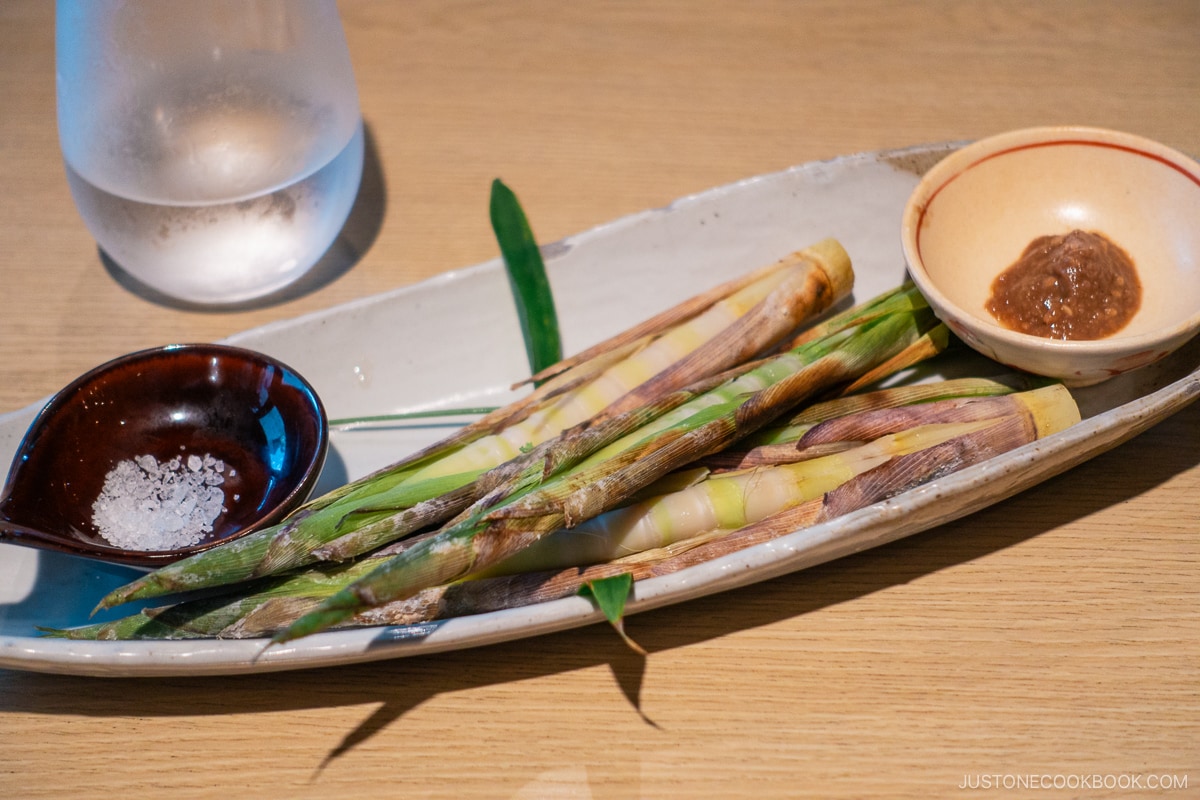
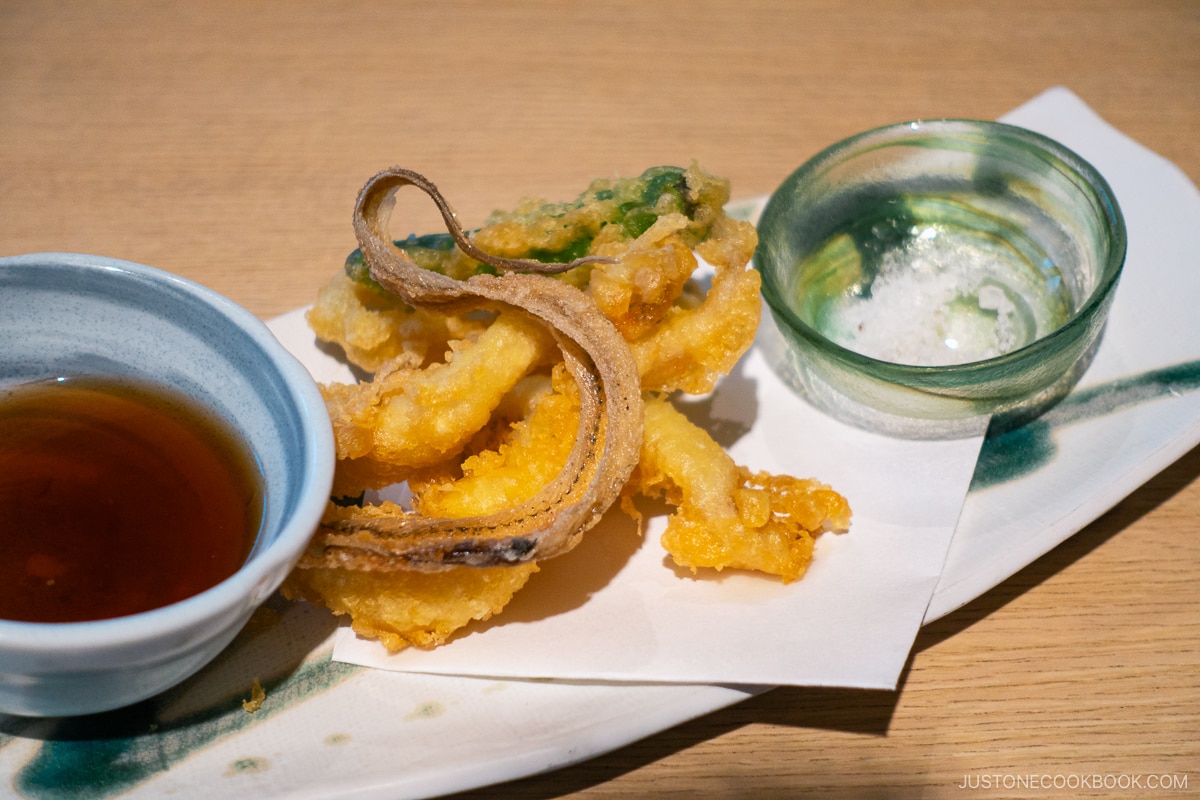
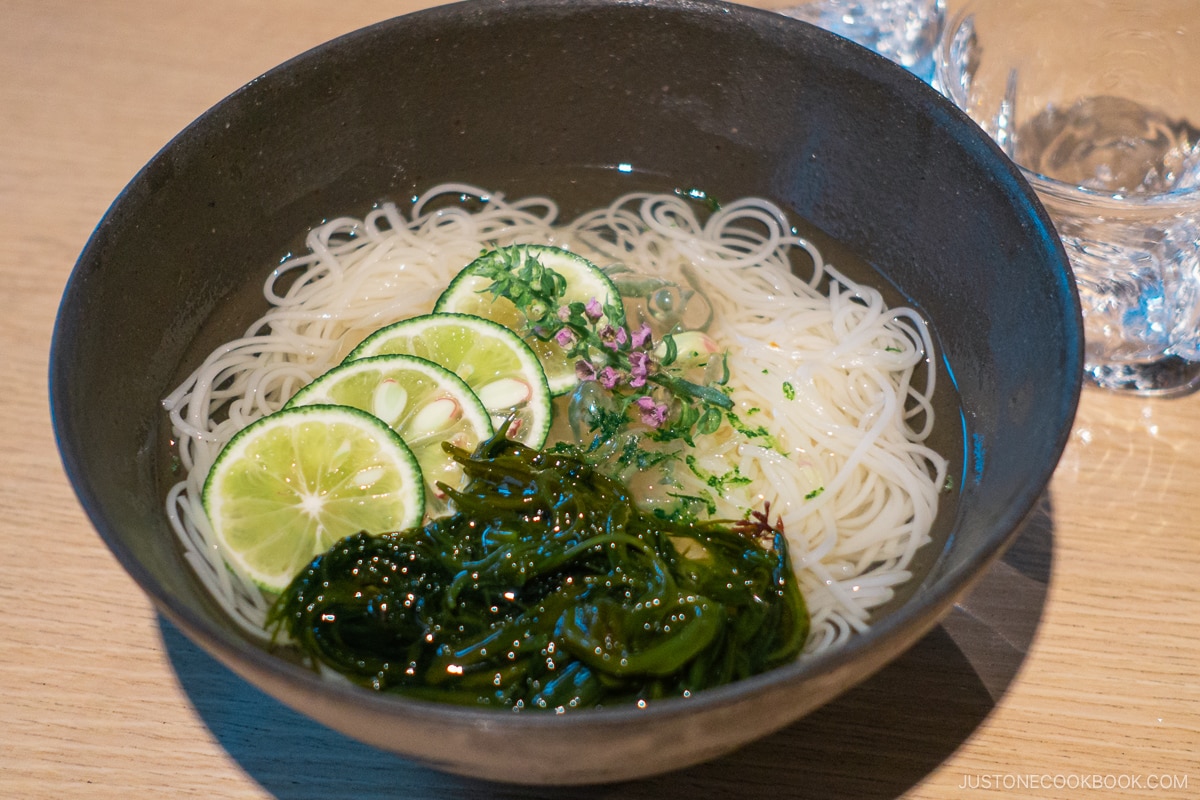
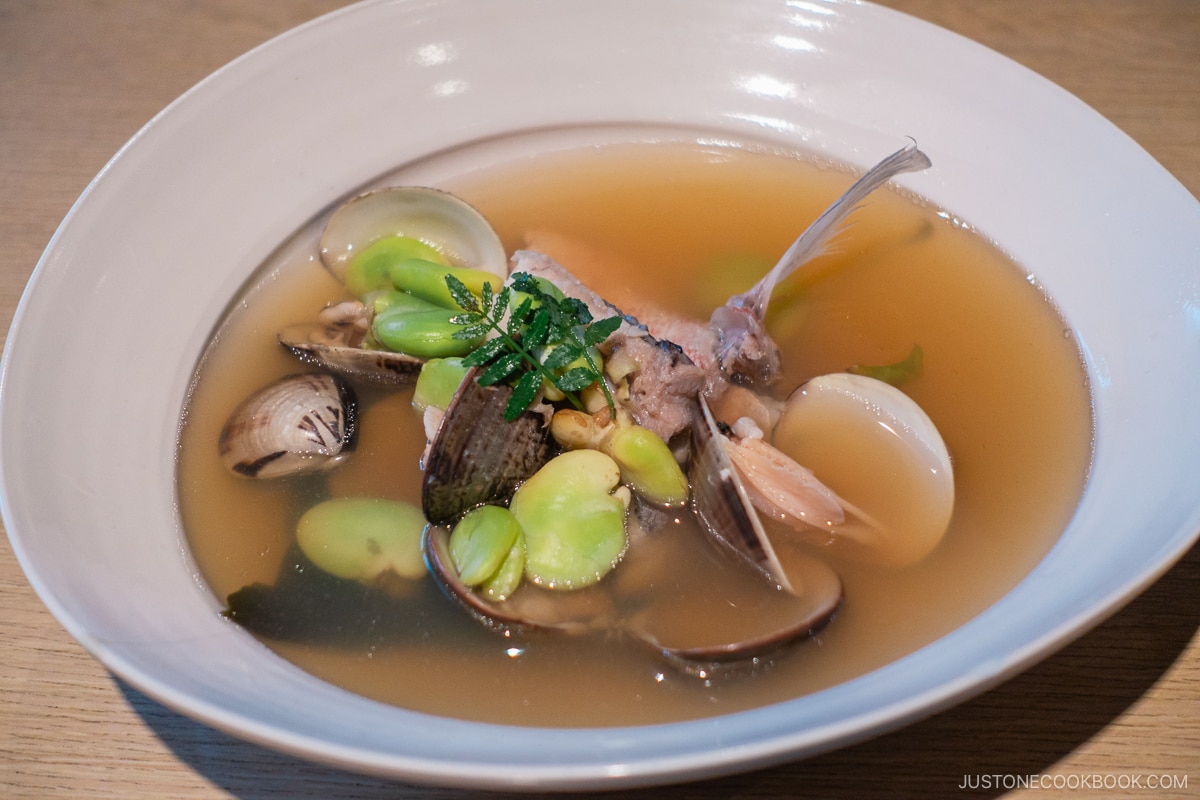
The standout dish of the evening was the delicate Nodoguro Shio Tataki (のど黒塩たたき). It featured slightly seared Nodoguro Shio Tataki, served atop ice, accompanied by freshly grated wasabi on a shark skin wasabi grater and kabosu, a type of Japanese citrus. What a perfect dish!
If you are staying near Toyama Station, we highly recommend this restaurant to everyone.
Our trip in the area continues on to Takayama (飛騨高山) – Part 1!











what are your thoughts about bringing a 1 year old toddler there? is it possible?
Hi Shir,
As far as transportation goes, it’s all very safe and clean so shouldn’t be a problem. However, you might have some issues finding a changing table facility.
Hi Nami,
Thank you for this informative article from you. Me and my family will do a trip to Japan on May of 2019. I was so happy to came across your site, If you can do me a favor of detailing how to go to snow corridor from JR Toyama station and vice versa.
The full ticket to tateyama kurobe alpine route is around JPY 9000+++(each) we are a family of 5 it is quite expensive to go through the full route. So please if you can help me to give the details of how we will go up to the snow corridor only from JR Toyama station and going back at the same station.
Thank you very much in advance and looking forward to your favorable response, More power to you and to your family.
Efren from Philippines.
Hi Efren
Sorry for the late response. We did not go through the full Alpine Route due to the high cost and there is no easy way to return to Tateyama once you get to Ogisawasogoannai Center. Some people have their car shipped while they enjoy the route on public transportation and pick it up from the other end to continue their travel.
We went from Toyama Station to Murodō Station (Murodo Ashikuraji, Tateyama, Nakaniikawa District, Toyama Prefecture 930-1406). This takes about almost 3 hours and Murado is the where the popular snow corridor pictures are taken. You can map this out on Google Maps to see the various travel time and costs.
Let us know if you have any questions.
Cheers
Mr. JOC
Do you purchase the individual bus and train tickets to get to the alps then return back to toyama? Is there any pass you will recommend?
Hi Adeline! Yes, individual tickets as we didn’t go all the way, and stopped at Murodo. 🙂
Hi, Thanks for the info. I would like to check: Did you take the same bus from Murodo back to Tateyama Station and then to Toyoma? The issue is with the luggage which will be at hotel in Toyoma. That’s the reason for the break at Murodo.
Thanks, Gideon
Hi Gideon! We did a day trip from Toyama Sta. to Murodo and went back to Toyama on the same day, so we did not have suitcase. As the stations are pretty small, we were afraid they either don’t have coin lockers or coin lockers are all full. It will not be easy to drag suitcase all the way…
If you have to check out the hotel in Toyama Station, you can leave at a Toyama station coin lockers (but have to go back to get it). They have several large coin lockers. My advice is to go with carry-on size if possible since that size coin lockers are more and easier to find.
Hi Nami-san,
This is Taylor, commented on your facebook page and made a lot of your recipes (Teriyaki Salmon a big family hit!). Now taking the whole family of wife+5 kids to Japan (,私は3年間日本に住んだことがありますが、妻と子供は日本が初めてです). Replicating a lot of your journey: Tokyo to Kanazawa, Toyama (first place I lived in Japan), Takayama, Shirakawa, Kyoto, Nagoya (I lived there 1.5 years), Tokyo. Looking at the Tateyama kurobe route and this summary was super helpful. ありがとうございました!
Hi Taylor! Thank you so much for trying out my recipes and following my FB (always good to exchange our conversation there). I’m so glad to hear this post was helpful. You’ll have a wonderful time in Japan! All these locations are my favorite. We’re going to Kyushu this summer, so hope to add more info after the trip. 奥様とお子さんに日本を気に入ってもらえるといいです。テイラーさんが日本語を話せるので、旅行もしやすいし、きっといい経験が出来るでしょう。どうぞ良い旅を!
Amazing post and its details!
Thank you for reading my post. 🙂